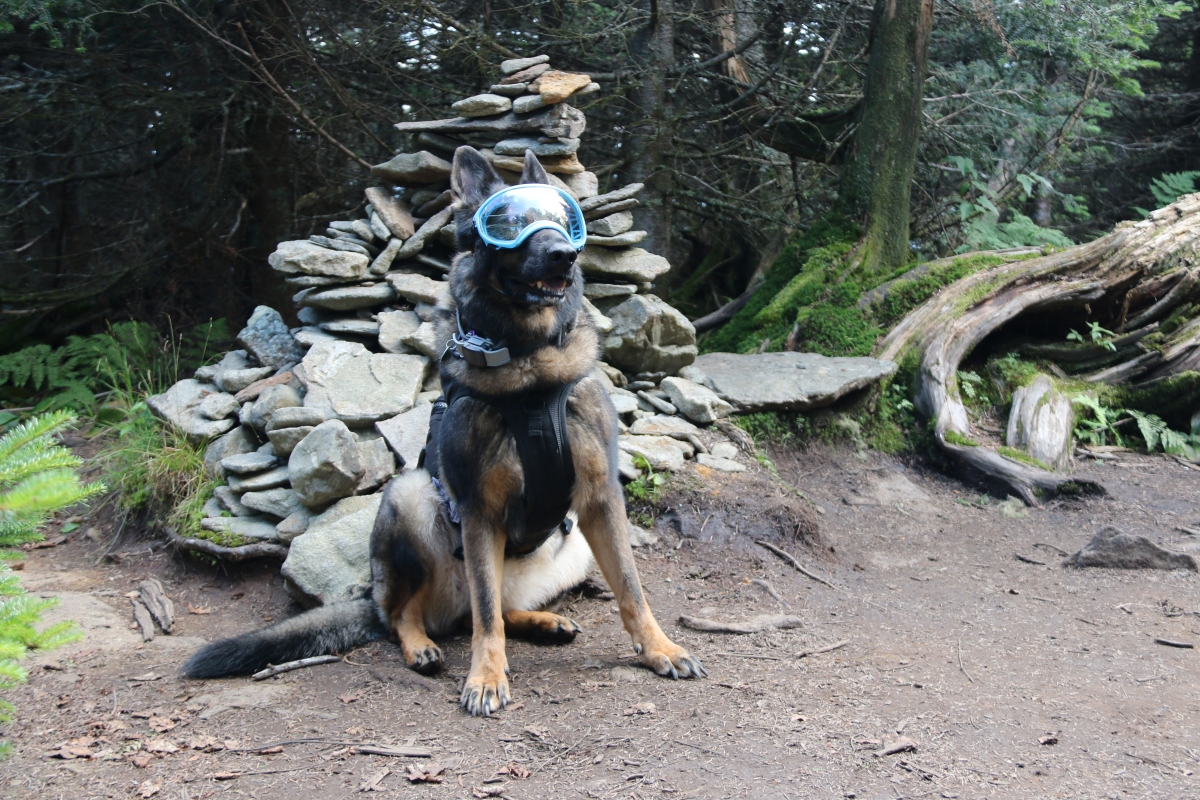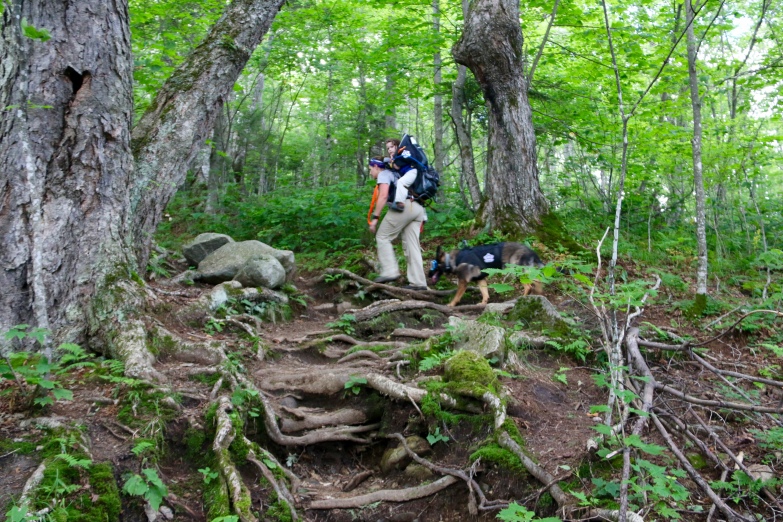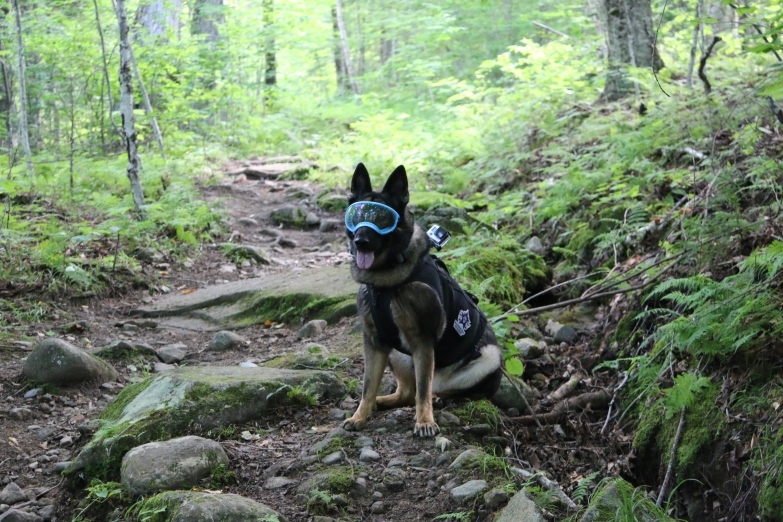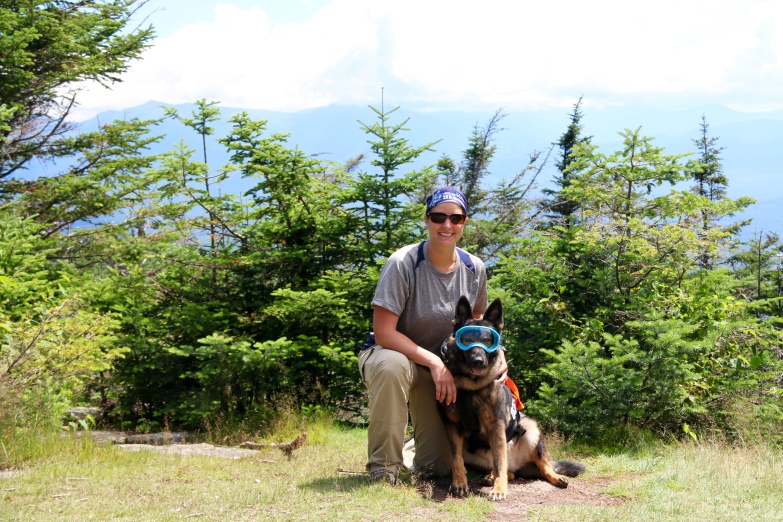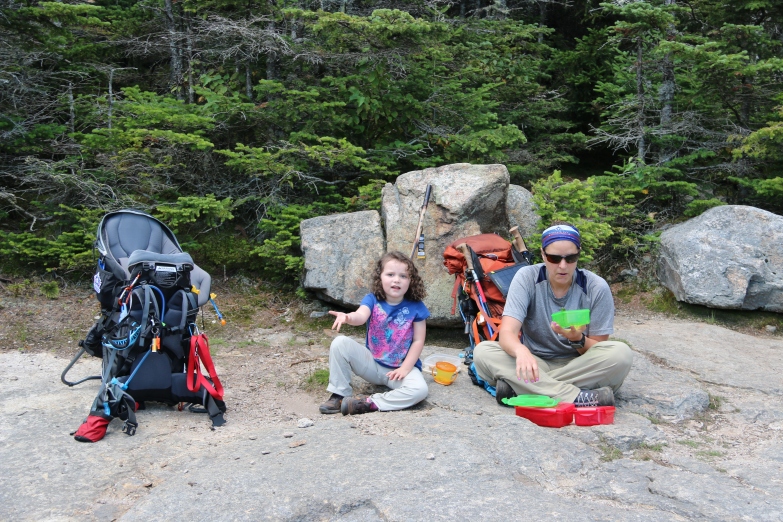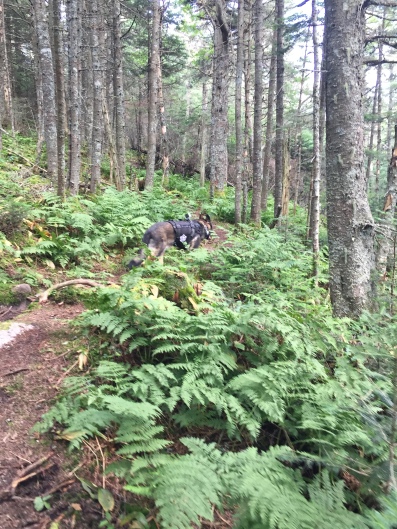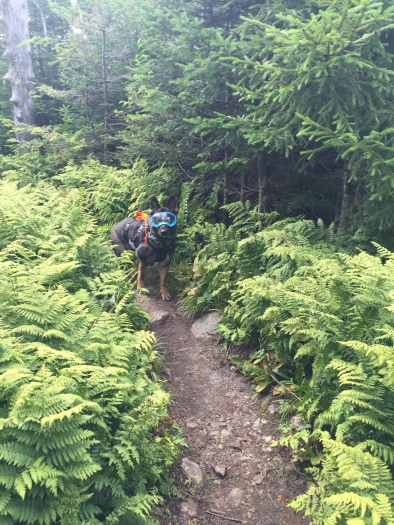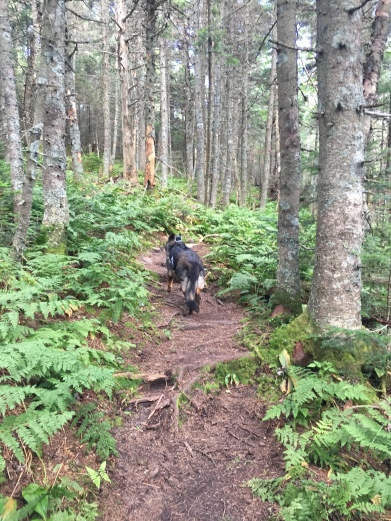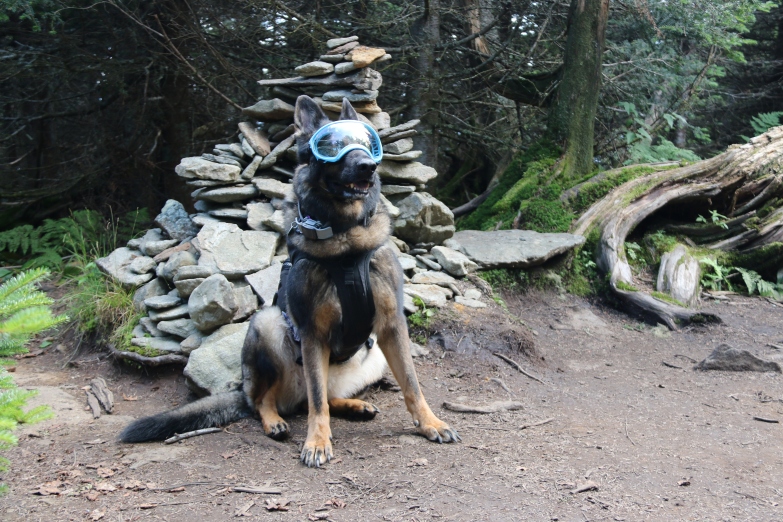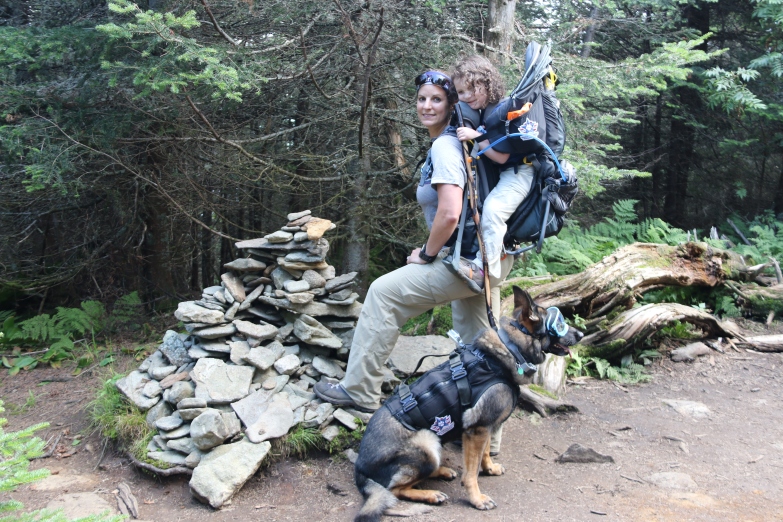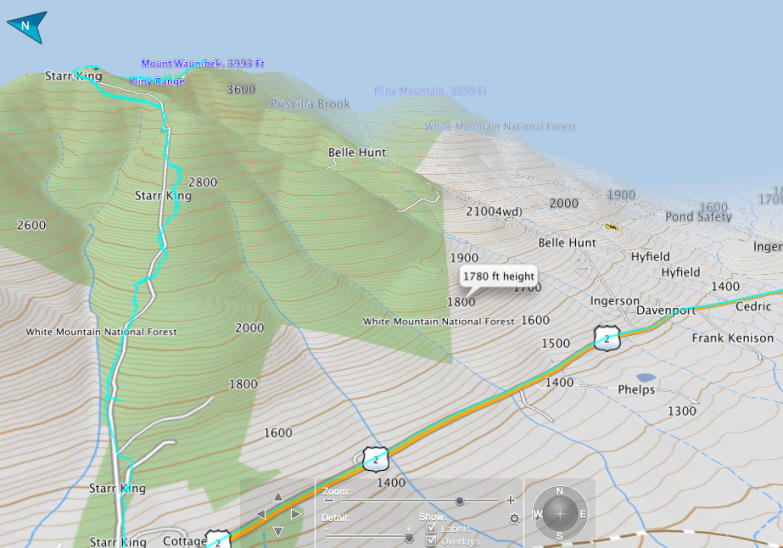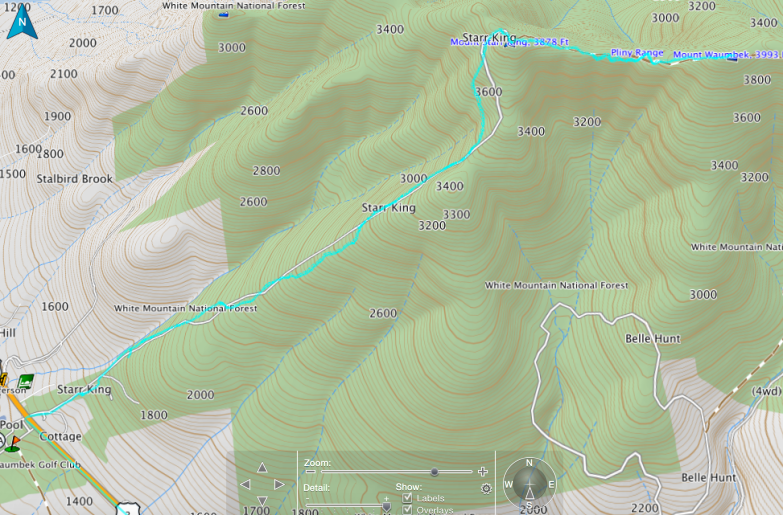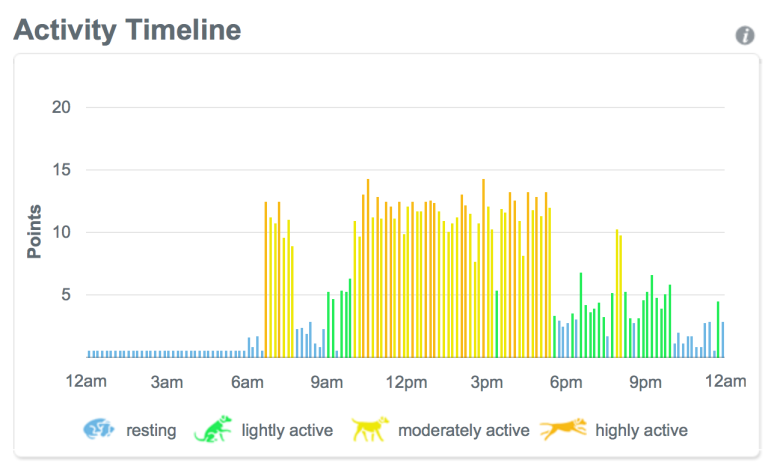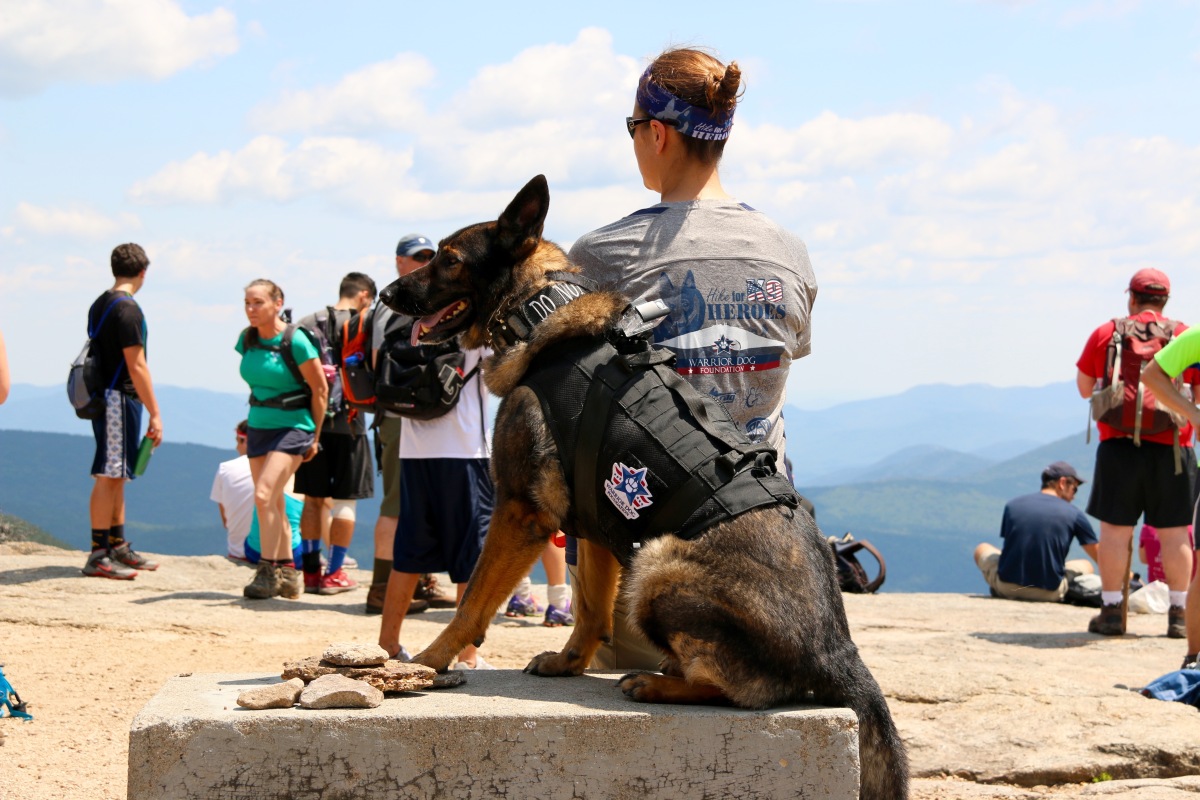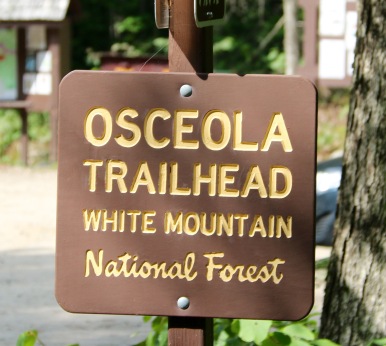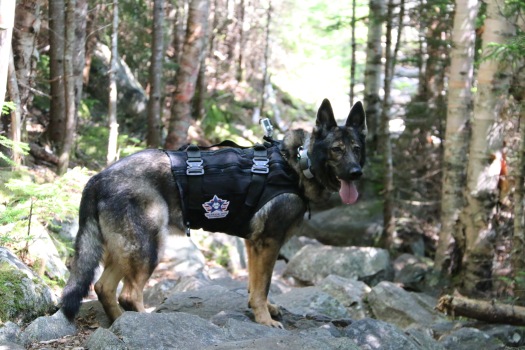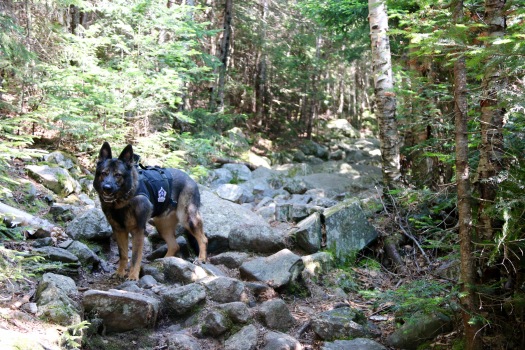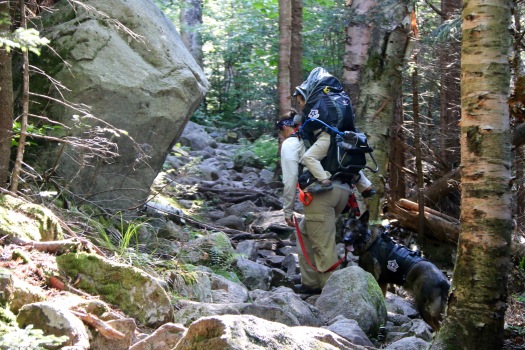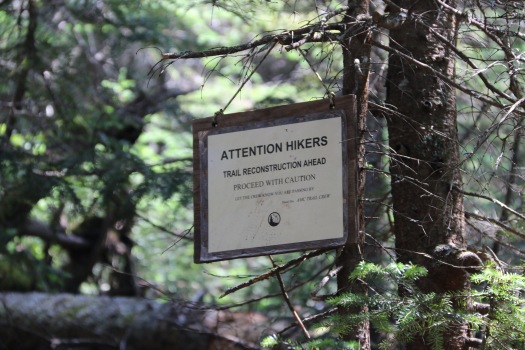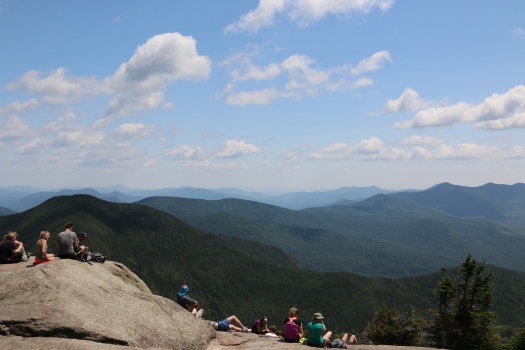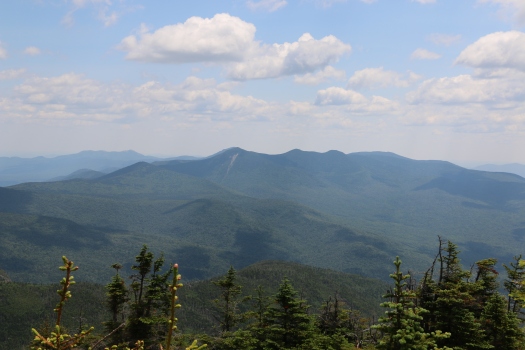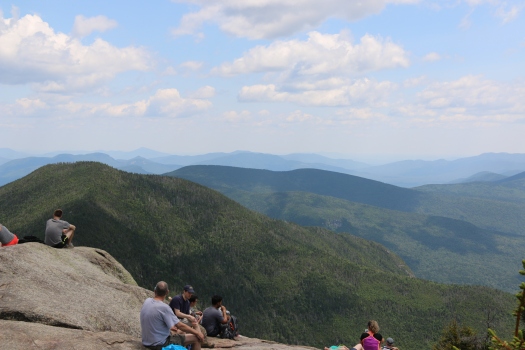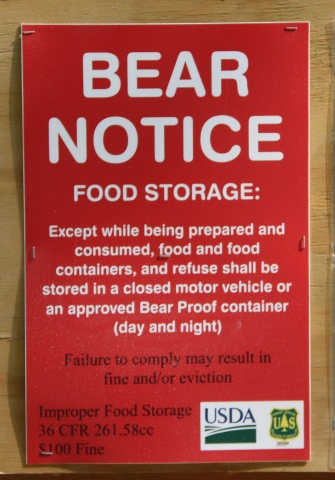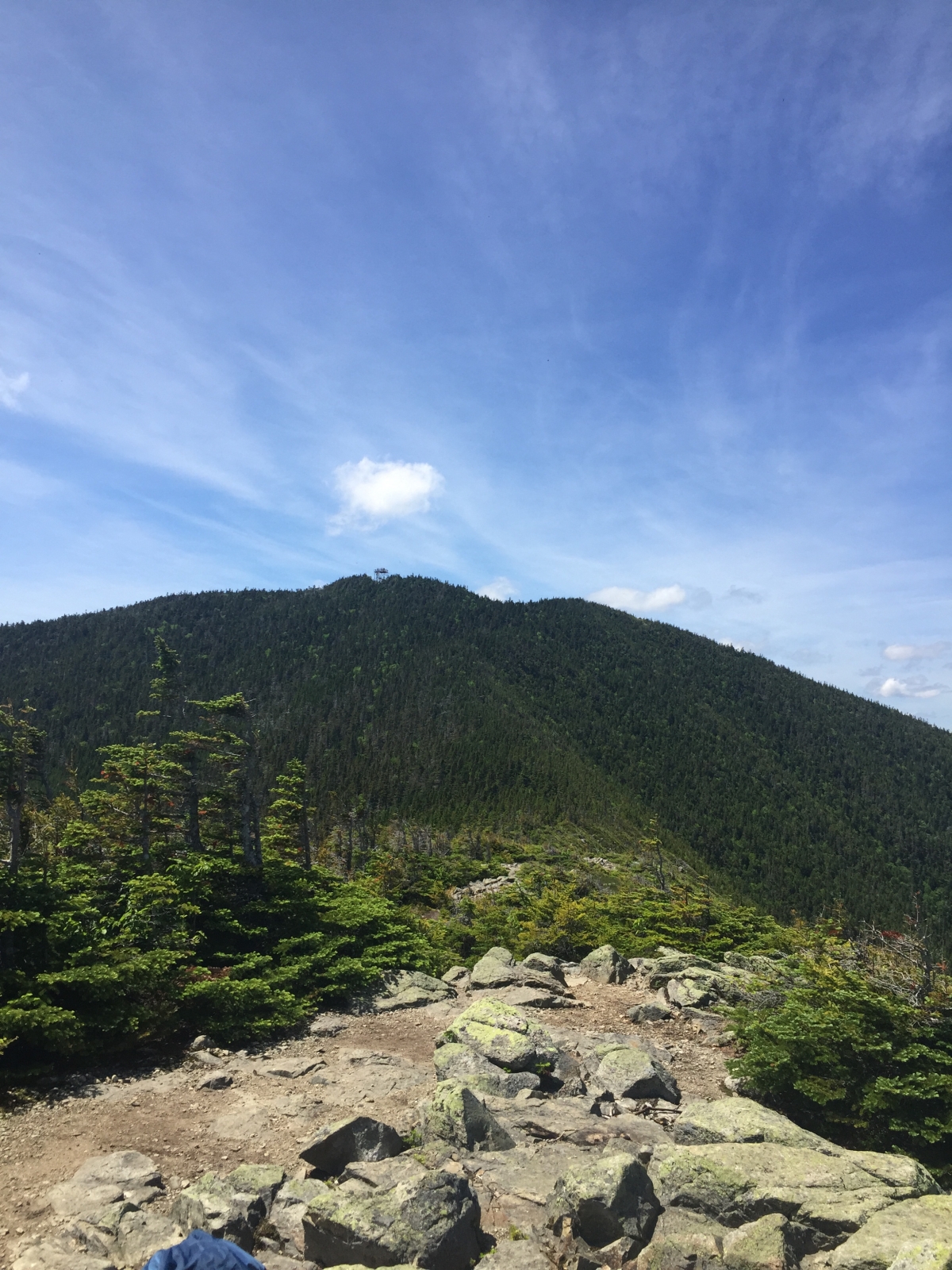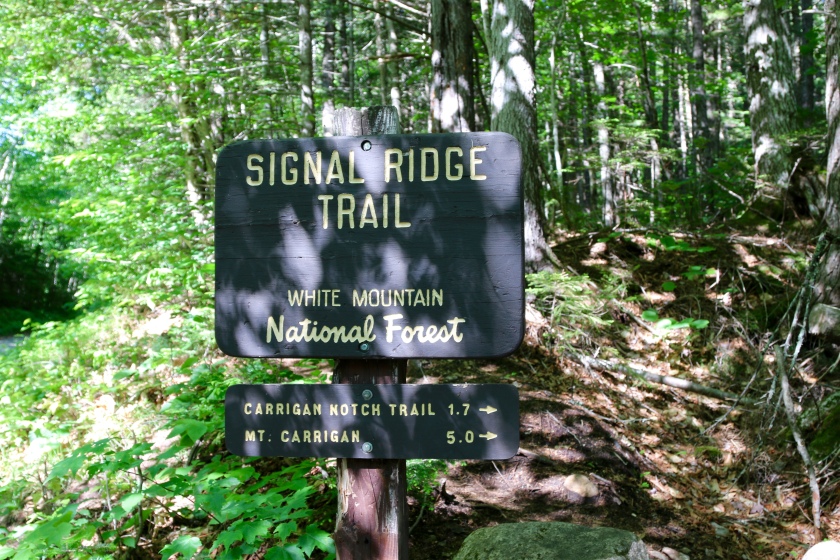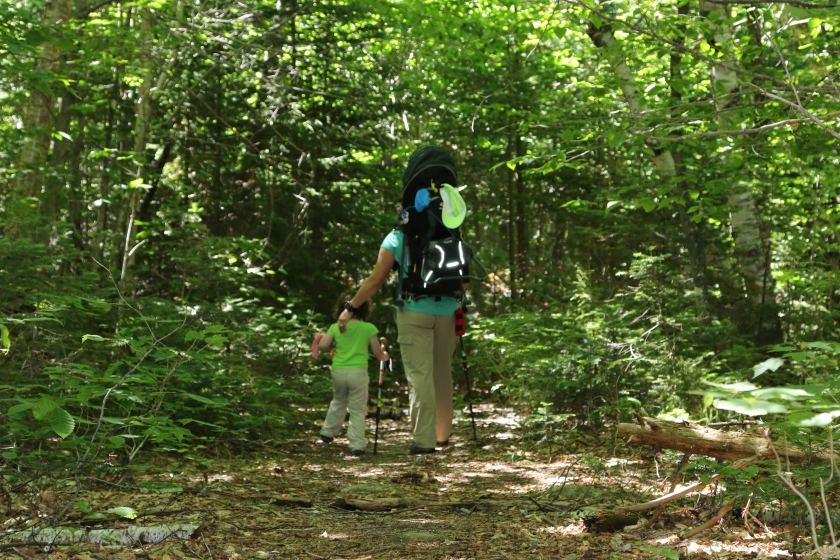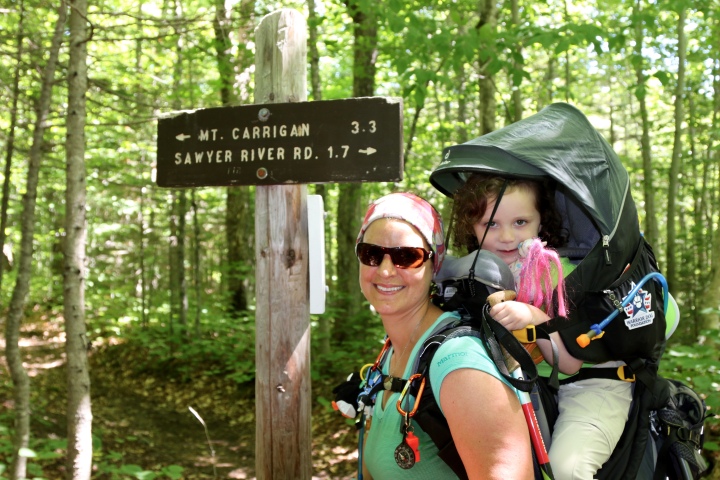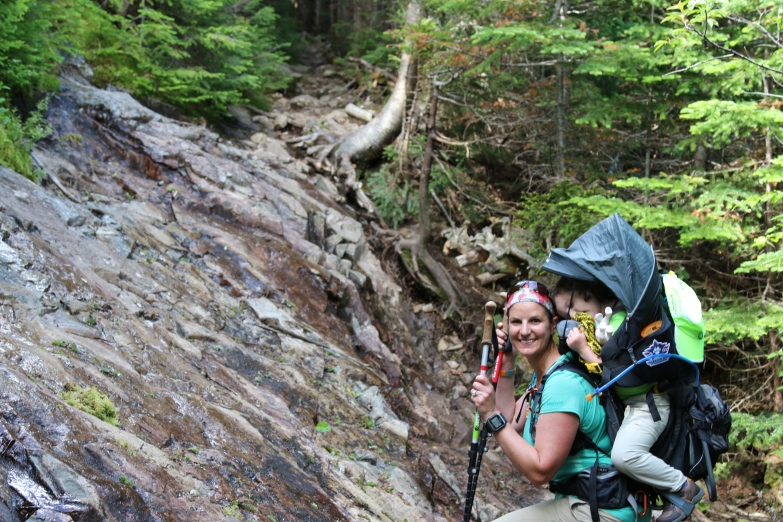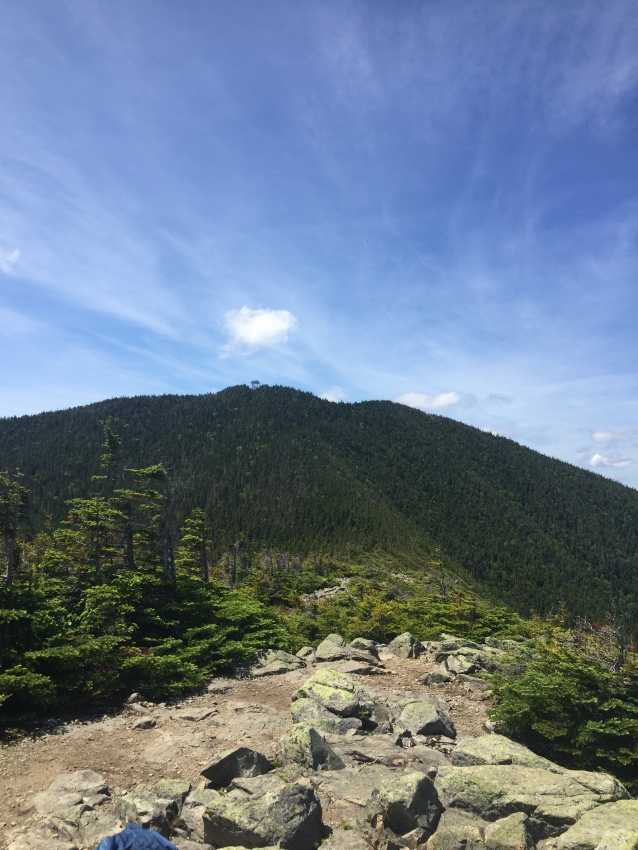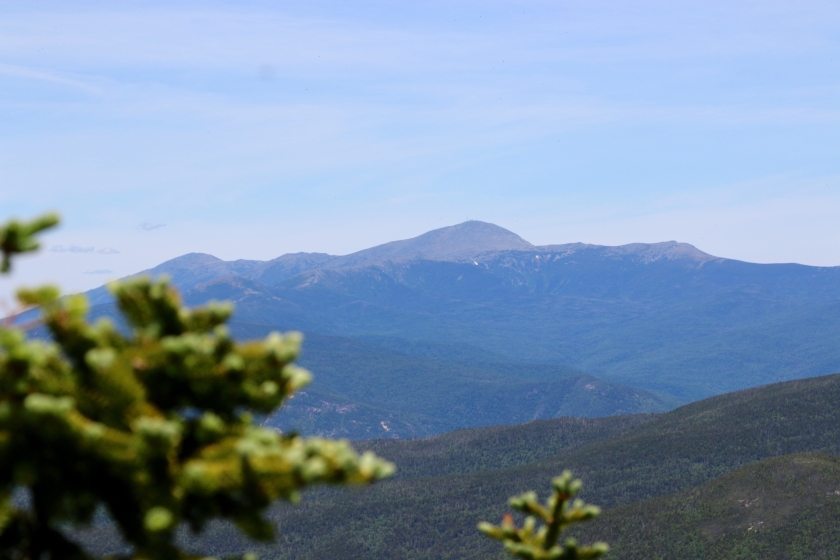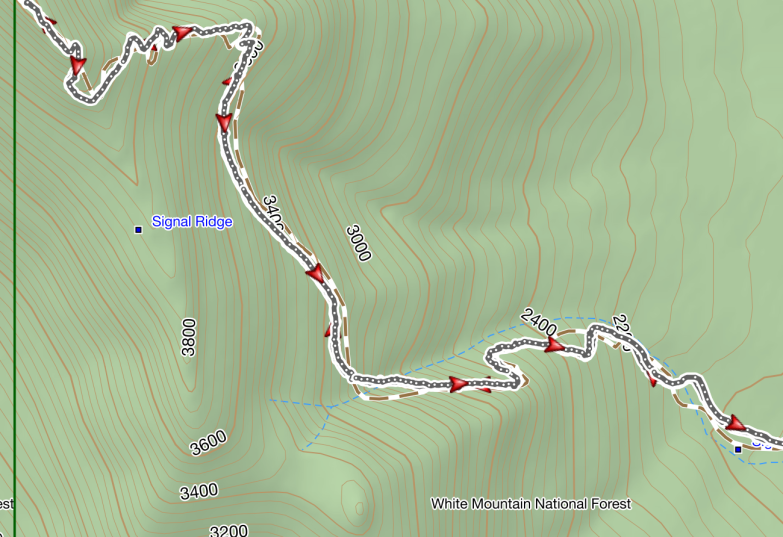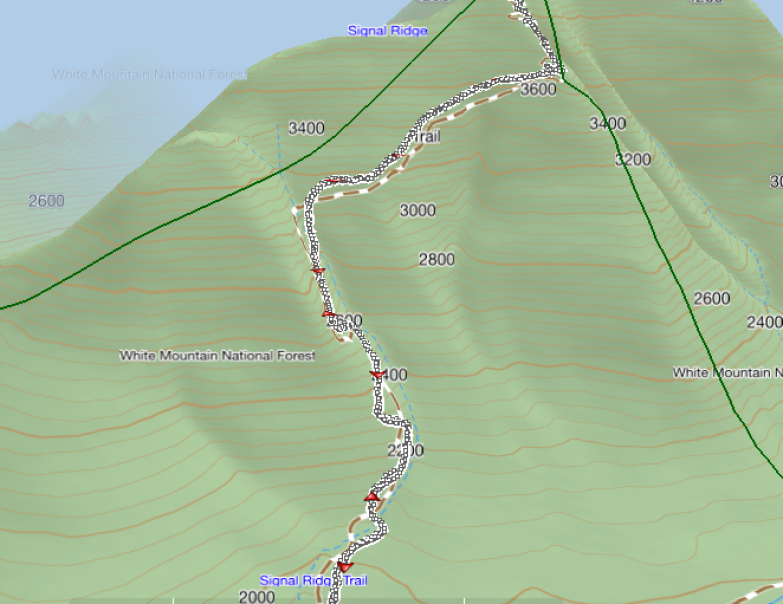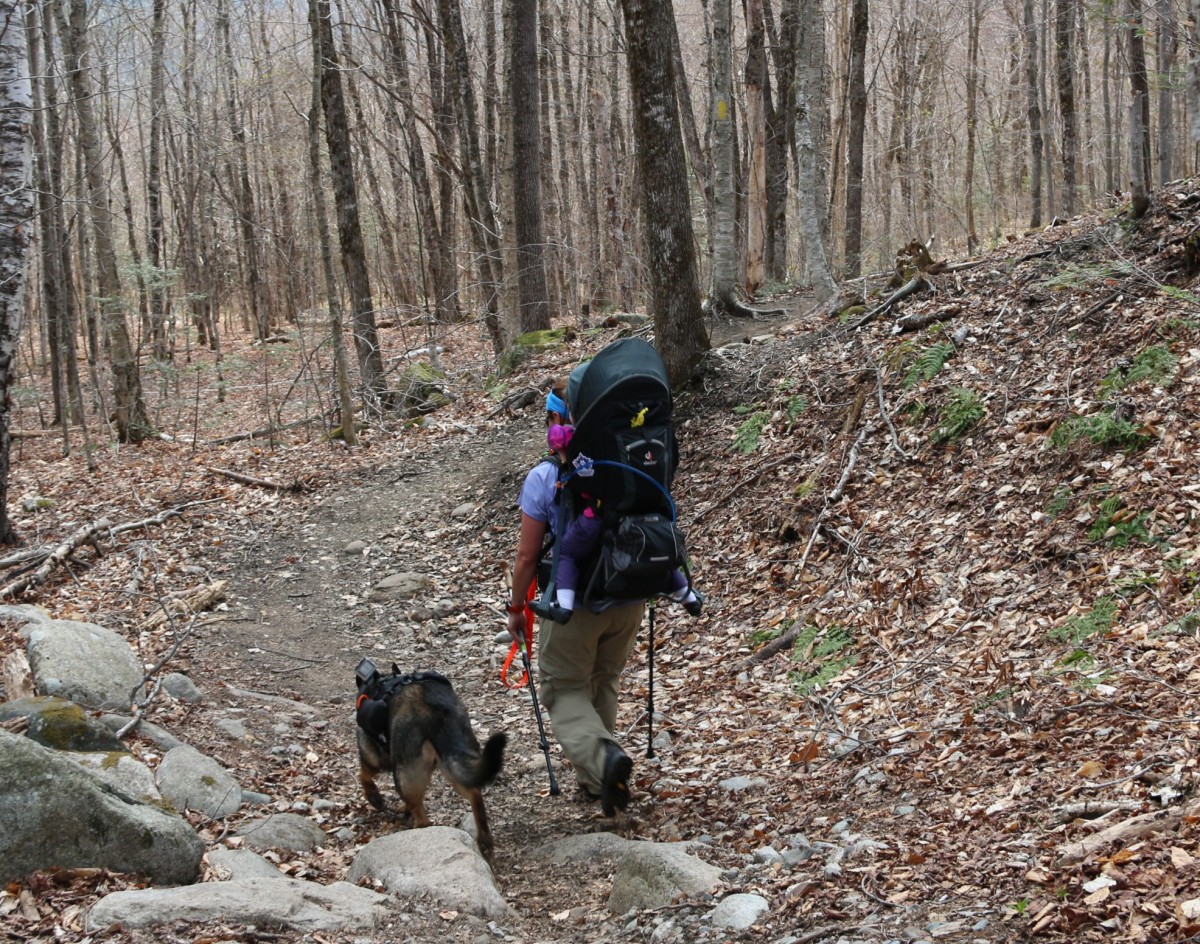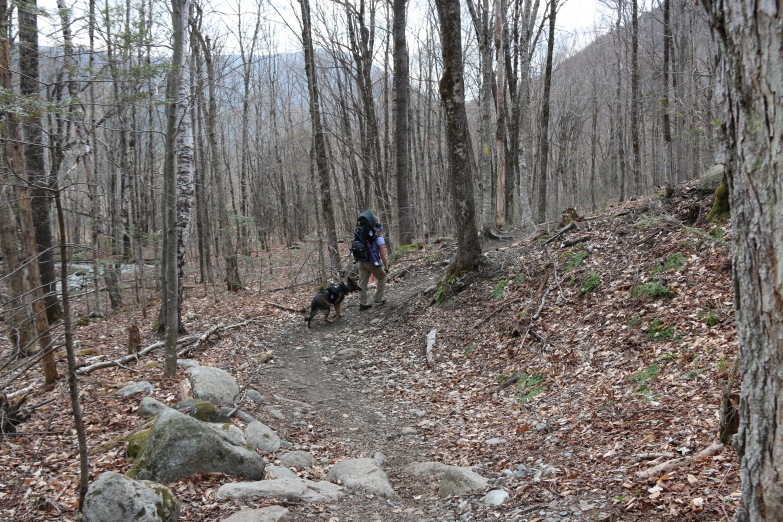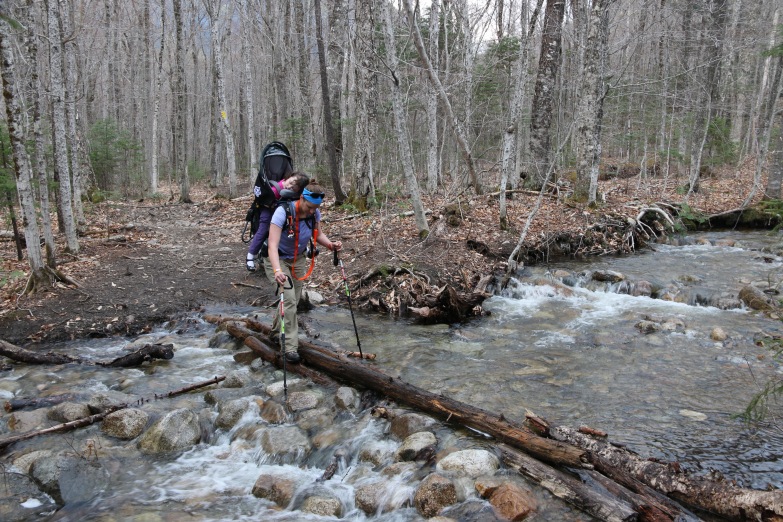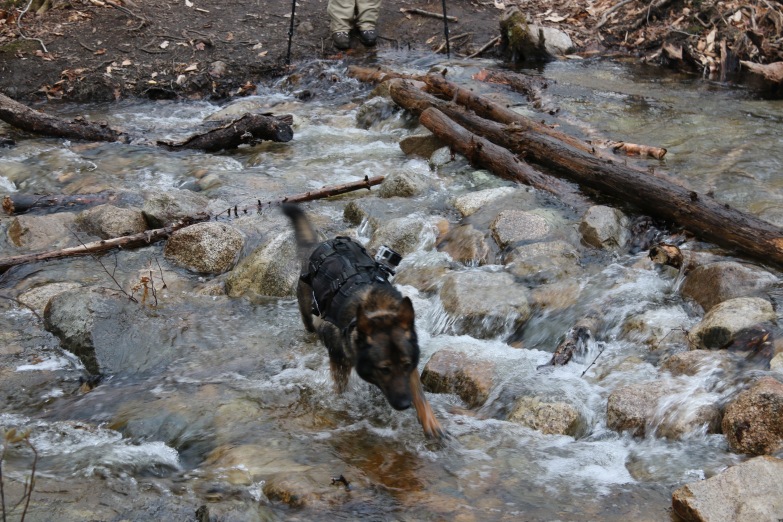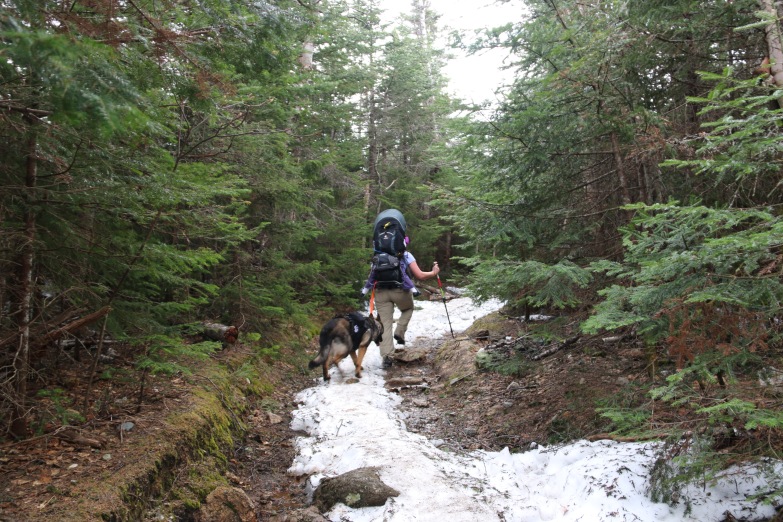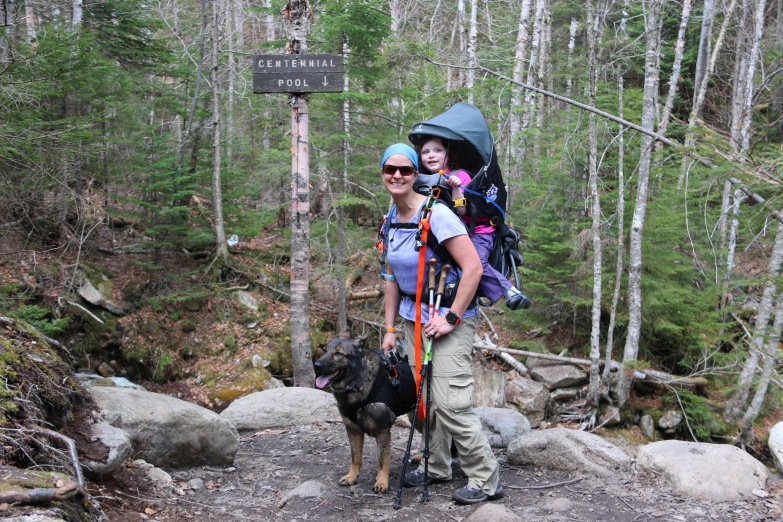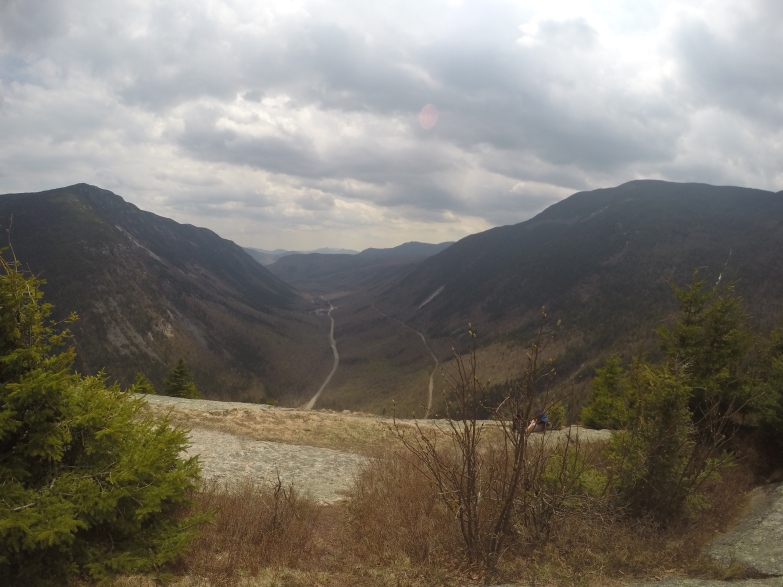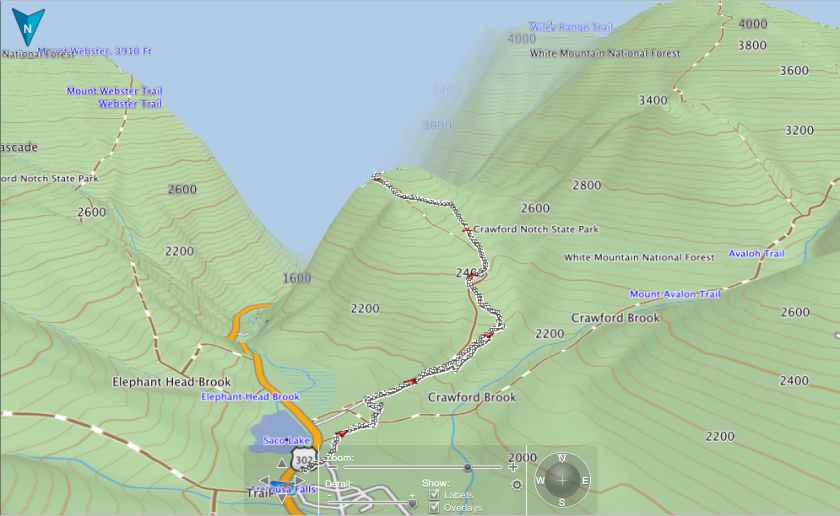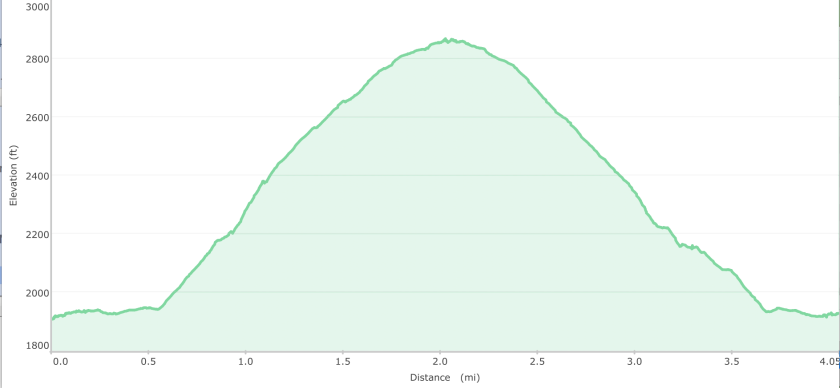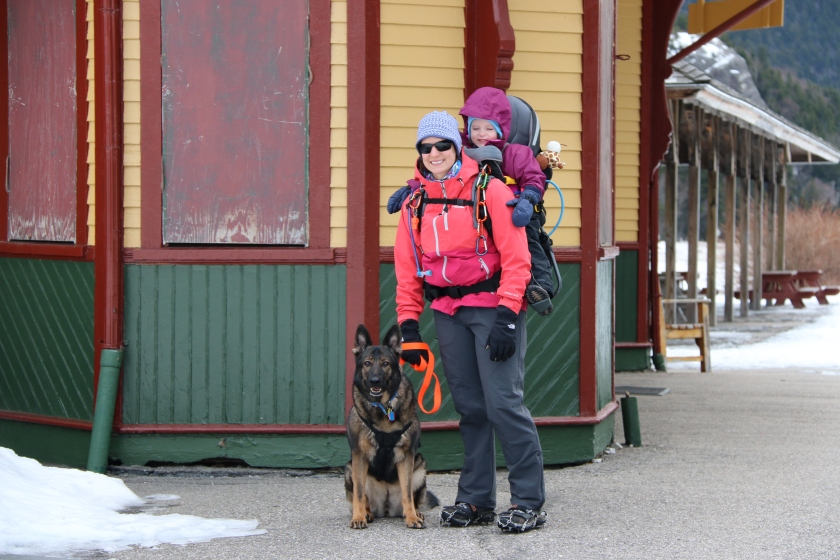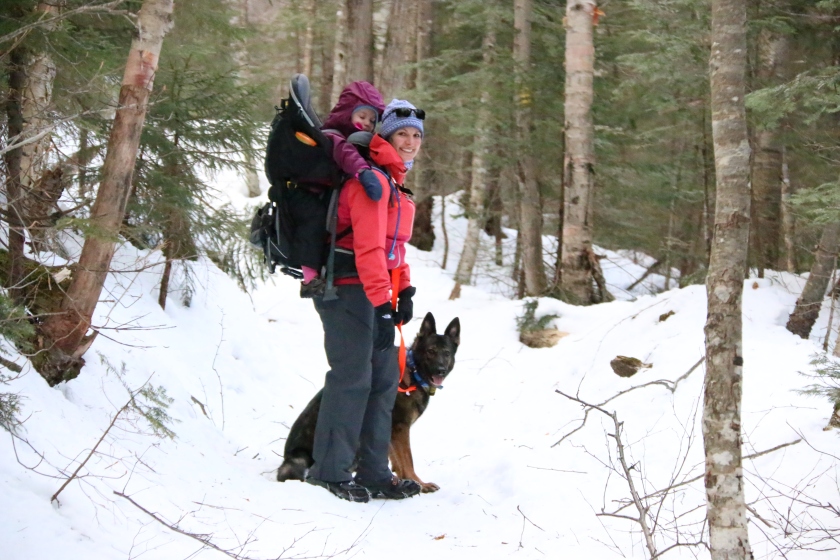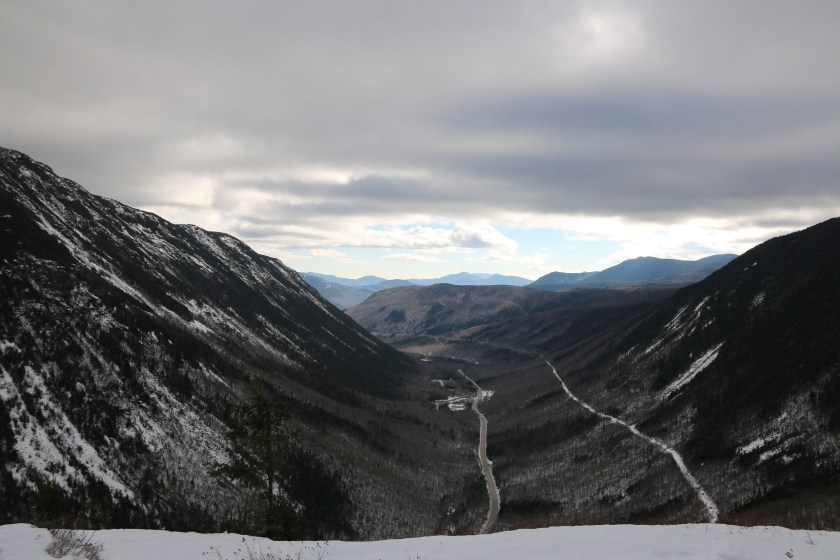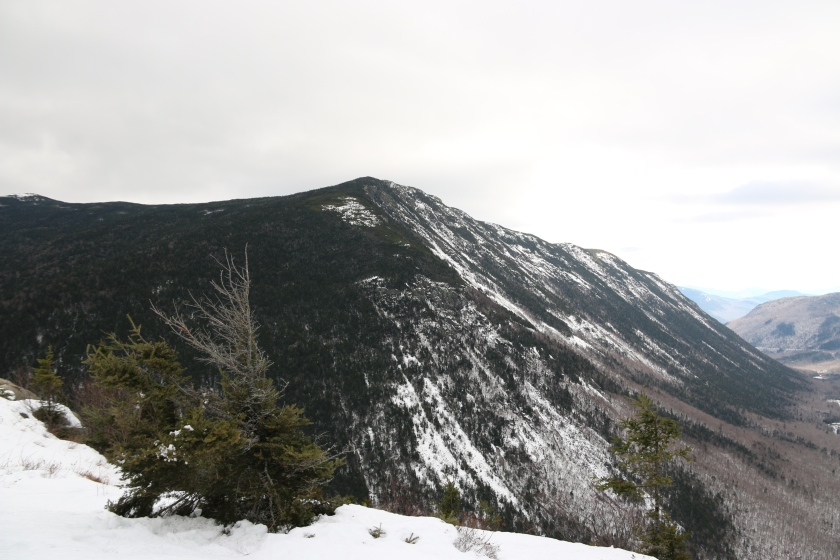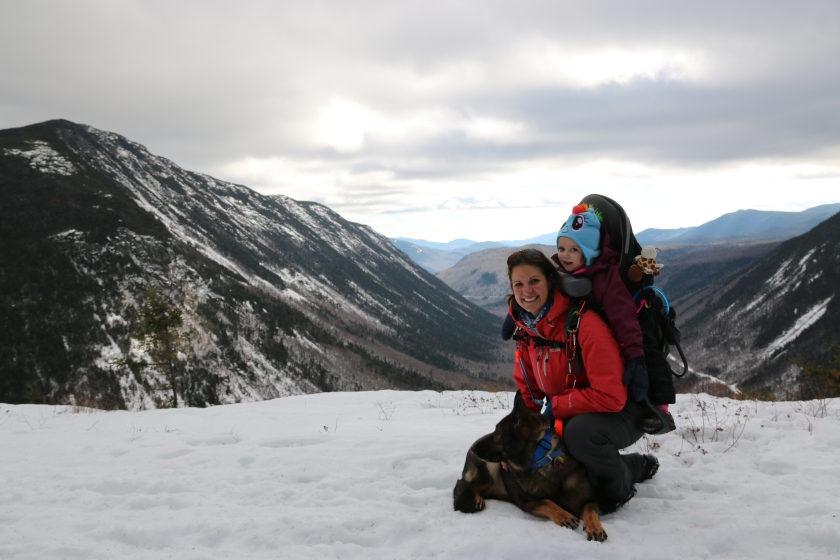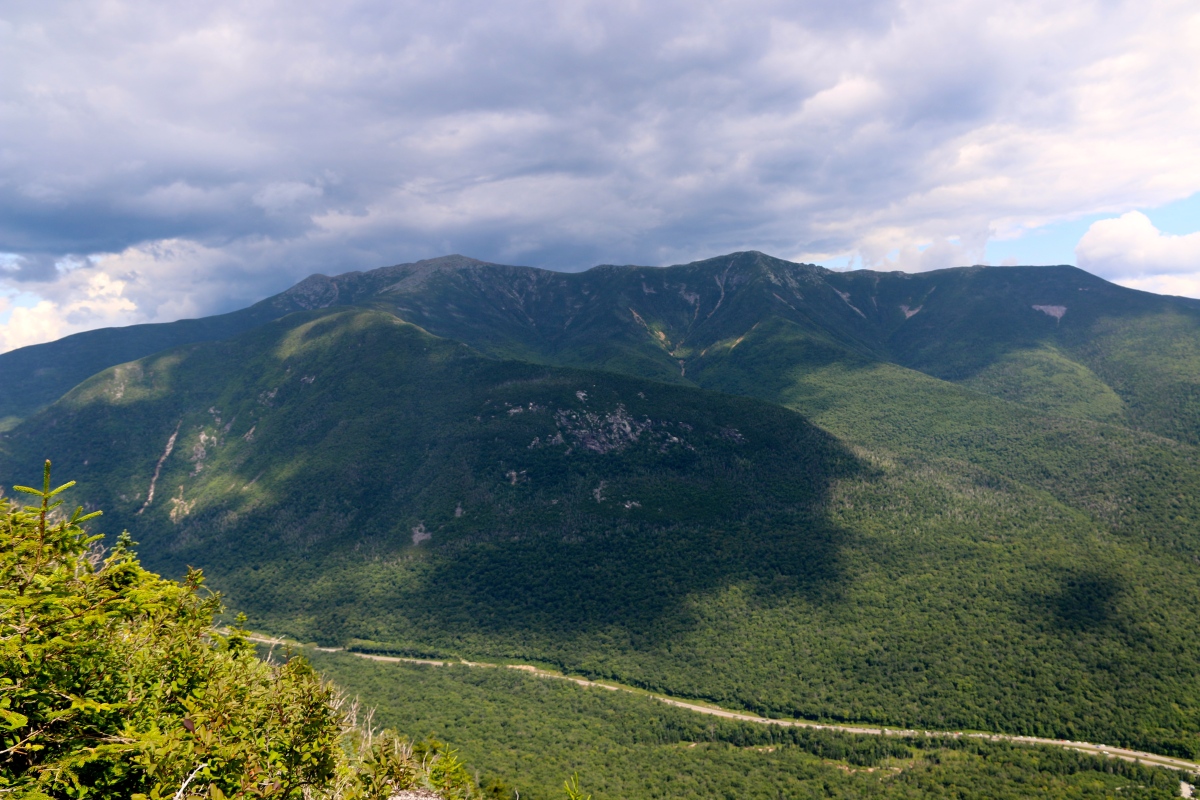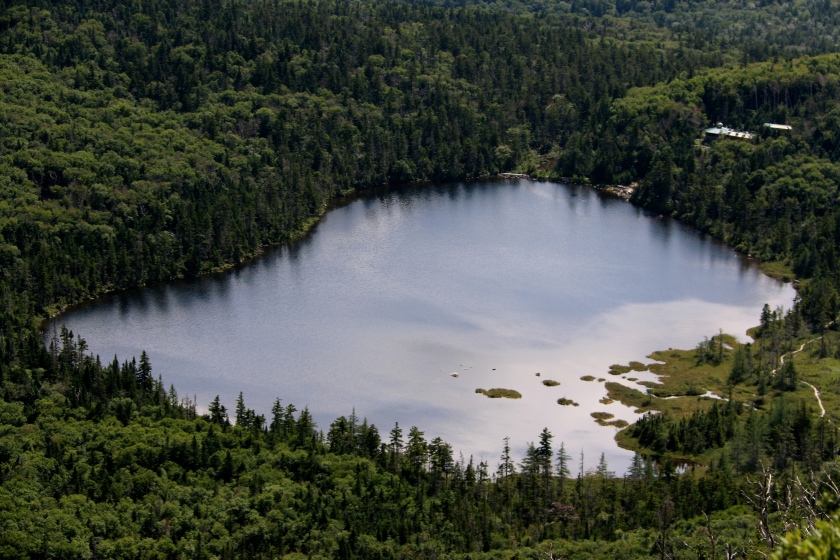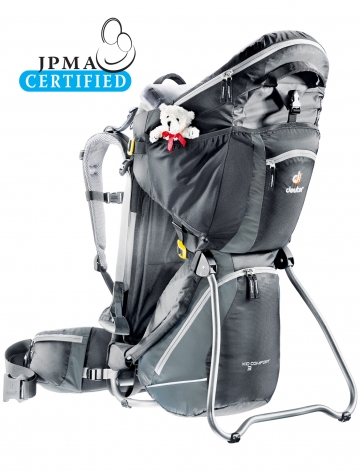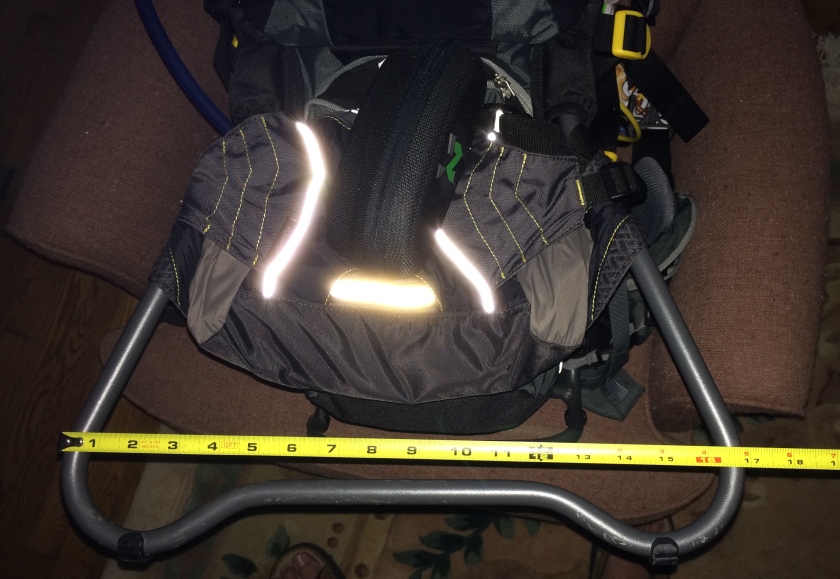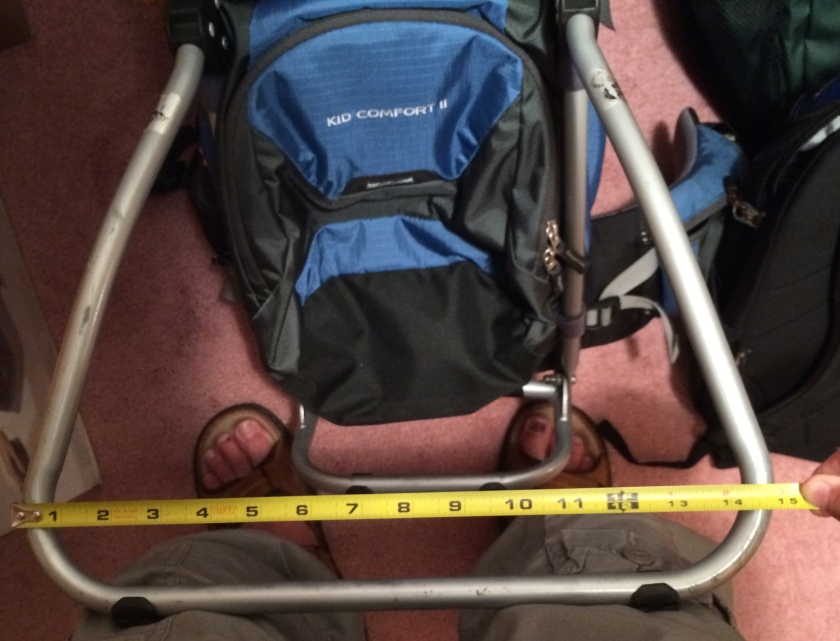It’s not a hike without some sort of complication either late in the night created by the Admiral’s excitement to “go to the mountain” or the morning phone call to the Navigator asking for help to deal with some networking and WiFi issue. The fact it was a combo of both was not surprising. At least, we got the hiccup of the hike out-of-the-way before we left the house.
We headed out to the start location a bit later than planned, but it was manageable to make the summit and get to campsite one. We would arrive at the campsite at nightfall.
The hike up to the campsite one was rather uneventful and a good warm up to the remaining terrain on the hike. We followed the Garfield Trail to the summit of Mount Garfield and down to Garfield Campsite. The summit approach was a bit of a rock scrabble but nothing difficult. New hikers may find it problematic, just take your time.
Some images along the way to Garfield

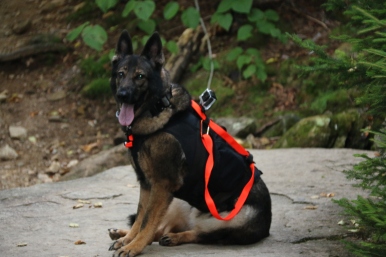
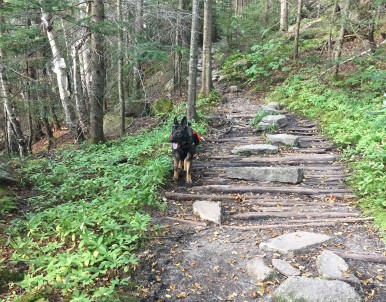
We were surprised to find out that we were able to locate Abby via her pet tracker, Tagg. This is the first hike we have done with being able to receive the update. It was short-lived, though. However, it is about right. Smack in the middle of a few trees on a side of a mountain 🙂
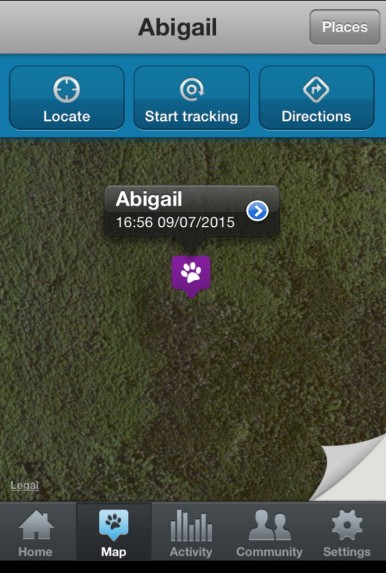
We captured a few images at the path division, one direction leads to Mount Garfield and to the Franconia Ridge, the other direction is a steep rock to rock descent on the Garfield Ridge Trail and to the Garfield Campsite.
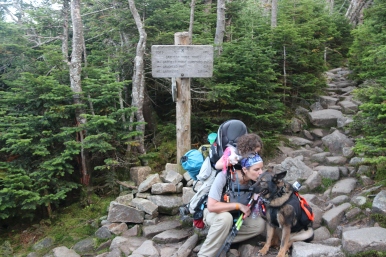
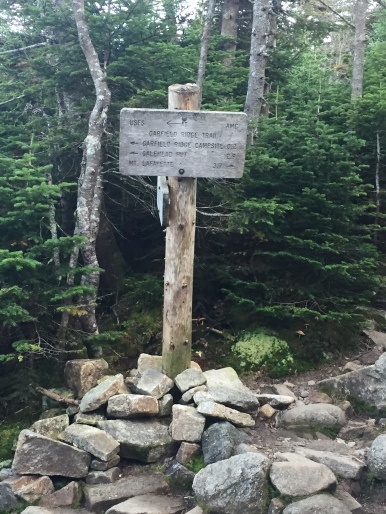
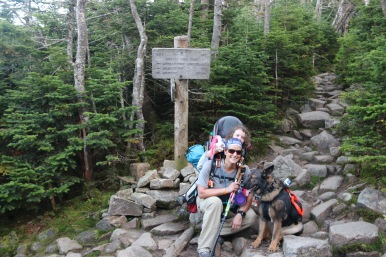
When we arrived to the campsite, we met with the Caretaker to receive our site location, unpacked before we needed our headlamps to move around the camp. We were placed at campsite #7, which is located on the right edge of the camp.
As a note to hikers using campsites — All hikers with two legs are $8, four legs are free, but no shelter is offered to four legs during storms. AMC rules so plan accordingly.
A memory plaque for Anne Converse Backus. You will pass this plaque on your left when you approach the campsite.
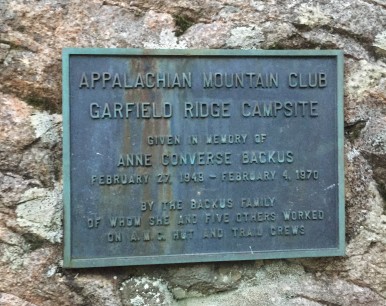
Anyone hiking the Garfield Ridge Trail and happens to need water. This campsite has a water source outside the campgrounds. It is about 8 to 10 steps from the trail junction for the Garfield Campsite & Garfield Ridge Trail. Just follow the sign below to find the water.
Make sure to read the warning sign, if it’s not there — here is the cliff note version: boil water, use filtration system or take your chances of becoming ill. (If you need understanding on becoming ill, please watch Naked & Afraid, episode Botswana Breakdown, 2014, season 3 episode 9 there is no medical team moments away on a mountain and well no modern bathrooms. We are not avid watchers of the show, but during recovery it was on and found it right on spot for how to get yourself sick.)
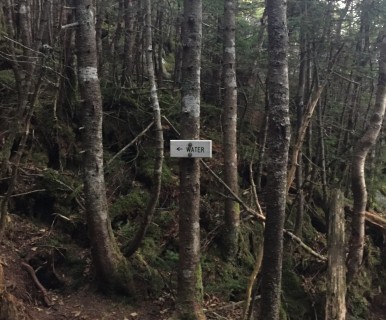
We had our dinner at the campsite assigned “meal grounds”. It’s just in the center of the campsite with a cook pan. Abby enjoyed her raw diet dinner while we had some leftovers. First day meals and second day morning meals on long hikes are always nice. If you plan smartly, you can freeze your meal and by the time you sit to enjoy it — its unfrozen. 🙂 Abby’s dinner was still a bit frozen, but it is helpful for keeping moisture in her diet.

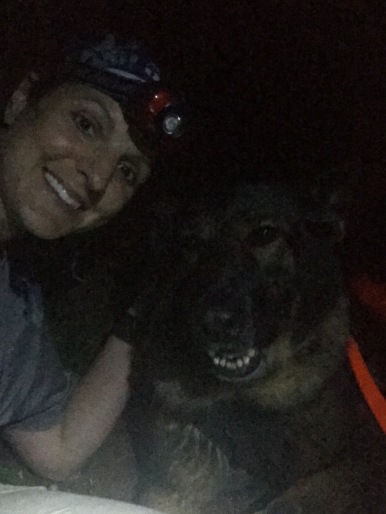
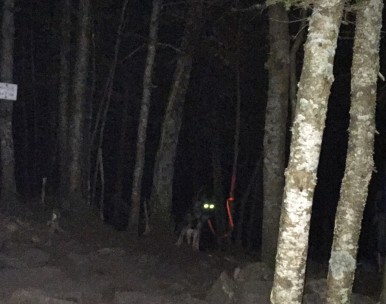
The caretaker notified us of bear activity, we followed all rules with food storage, trash and added in our toiletries for good measure. This meant placing all those items into the bear boxes provided to us.
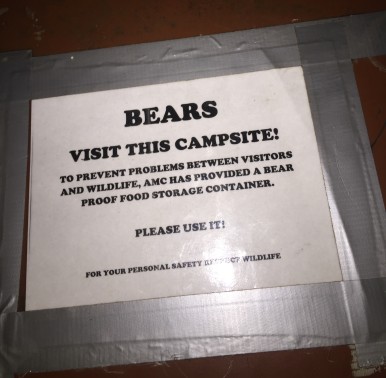
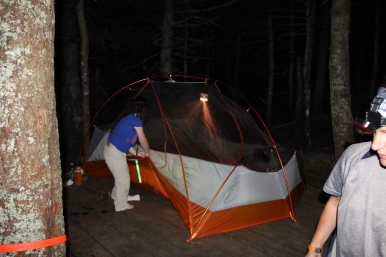
Abby’s activity for the day via Tagg, a pet tracker.
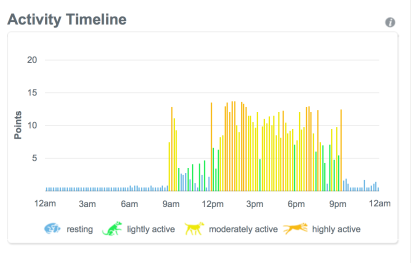
The night was cool, windy and clear. About 430 in the morning, Abby woke me up. First thing, I thought was, “really you have to use the bathroom this early” and then I heard the activity and felt the impact tremors of a bear or two. I was not up for sticking my head out of the tent to get a firm count on the activity. Since, Abby’s behavior made it clear to us it was not a little raccoon.
We maneuvered into position while Abby went into a low guarded position. Minutes later, Abby let out one hell of a deep growl within moments we could hear the outdoor activity moving farther away, the Navigator exited the tent and all as well. Of course, the Admiral was snoring through it all.
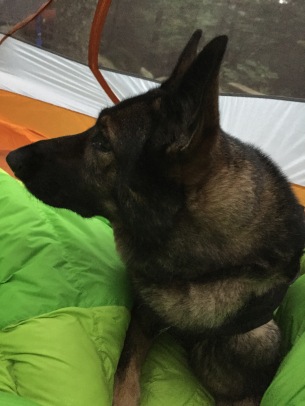
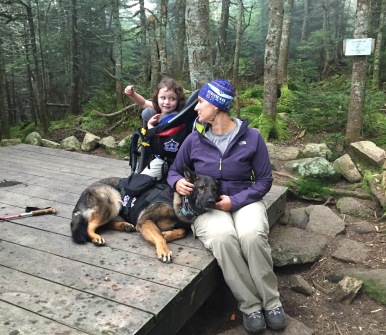
We headed out of the campsite and refilled our water. Though, it was a cold morning the temperature would be in the upper 70s by mid-day with possible severe thunderstorms in the evening and overnight. This is one reason we love our AMC huts and campsites, it’s a location to receive our weather updates.
Albeit in the Whites, it is still best guess 🙂 So, plan for the worst and pray like hell for the best.
After refilling our water, we headed down the Garfield Ridge Trail to Galehead Hut. About 1/2 mile into the morning trek, Abby came to a dead stop and looked back with one of her famous WTF looks. When reached her location, we fully understood her look. Our morning plans to leave camp an hour later, so that the clouds were passing over us was worth it.
We came to a point where we needed to travel down a ‘waterfall’. Now, it’s not a gushing waterfall, but the climb down is steep. Of course, Abby being wise and small avoided the rocks by traveling through the trees. The Navigator and I made our way down the wet moss-covered rocks while listening to the Admiral talk about rocks, trees, and made sure we very careful.
This image does not do the climb down justice, but you get an idea of the terrain.
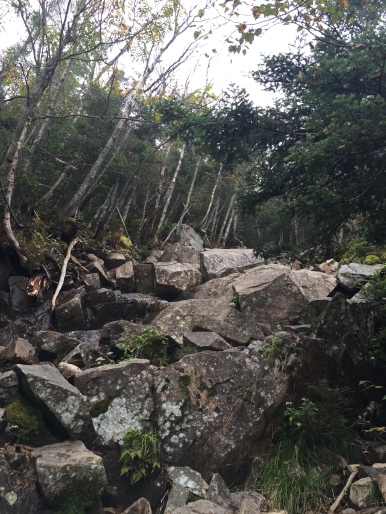
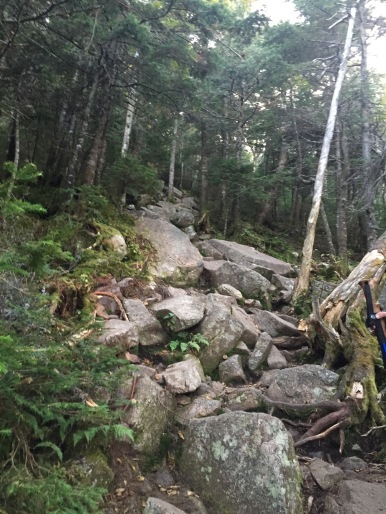
Here is the descent from the campsite to the waterfall and off Garfield.
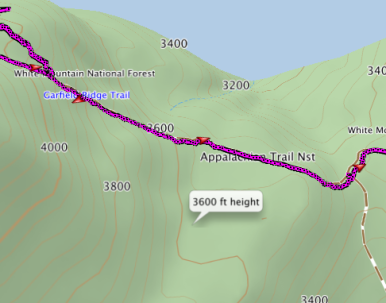
The rest of the trail to Galehead Hut is what we call PUDS, also known as, Pointless Ups and DownS. Most of the ups and downs are on rock facings and some are steep, but not steep enough for a hand over feet climb.
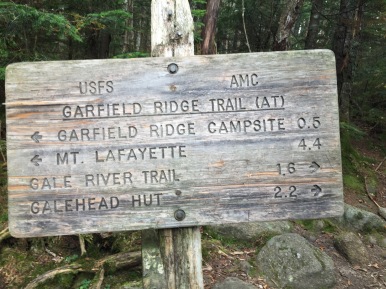
Below is one of the easier rock facing climbs, it gives you an idea of the terrain and the puds. There are some rather steep descents, if you take a moment and look around you may find a well-travelled path to your left or right. The path leads around the rock area, it is safer for people with heavier backpacks and easier on your legs.
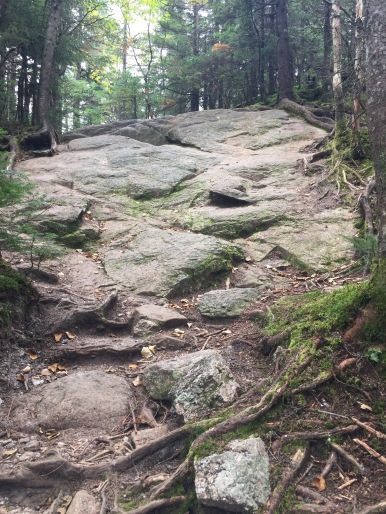
Not all of the trail is rocks. You will stumble across some roots along the way. No pun intended.
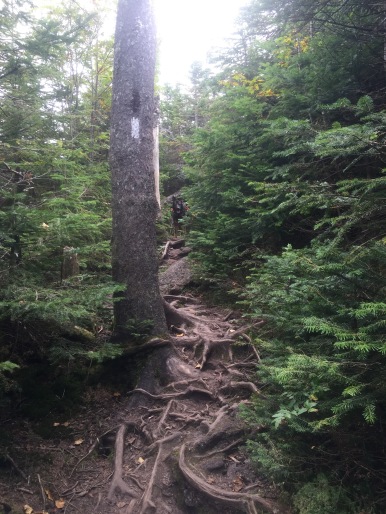
And there are a few short-lived areas of flat.

Here is a section of the PUDS hike.
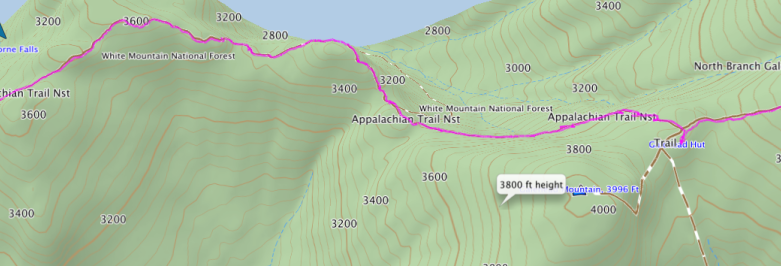
The last 0.6 miles to Galehead Hut is a rather steep climb. You can see the incline in the image above. Galehead Hut is located to the right in the image above.

Galehead Hut is located at the ‘base’ of South Twin and Galehead Mountain. Galehead Mountain is a quick half mile climb from the hut. This is a great location to drop your gear and make the climb. You will take Frost Trail to the summit of Galehead. The summit of Galehead has no great views at the summit. However, there are some views along the way. So, when you drop your gear, remember to bring the camera. 😉
We hung out at the hut for some time. The trek from Garfield to Galehead was not the easiest nor the worst, but the carrying 54lb pack, 43lbs of it was moving and talking, made a break without the pack feel like heaven. I am pretty sure Abby was happy to disconnect from her saddle bags weighing 5 lbs, too. I did not have to ask the Navigator, who nicely dropped his pack of 56lbs right on arrival. (Remember, we are carrying items for three people’s needs in one and a fourth packs)
As usual, we got the weather updates, refilled our water and made a few friends while hanging out at the hut. Of course, Abby was the center of attention before she just wanted to be left alone and regroup in her corner.
We had an early dinner while a few storm clouds passed over and reviewed our plan. The night forecast was a high probability of serve thunderstorms. Our next location to camp was Guyot about 3.5 miles away.
A few things about Guyot Campsite. It’s in a rather open area, which means limited tree cover. There are shelters for storms, but dogs are not allowed. From the hut, one will have to summit South Twin, descend South Twin, walk to Mount Guyot, descend part of Mount Guyot and reach the Guyot Campsite. There is a point in the trek where you must commit to the campsite or fall back and camp in the tree line of South Twin. The approach to the campsite is open from Mount Guyot and at times steep. So, plan wisely.
We made our plans to attempt to make it to Guyot campsite. We would make a judgment call at the point of total commitment. We collected our gear and we were off.
First goal was to tackle the very steep climb of South Twin. It’s a short climb, but very steep. Very steep puts it mildly. During the climb, Abby needed a few supported jumps. One of the jumps was onto a steep rock facing and then onto a huge bolder. We needed to work together to support her on the second jump so she did not fall backwards and made the jump to the second onto boulder without face planting into the next rock only a few inches from the landing on the boulder. We did have to lift her up twice. I am grateful she had a very supportive harness that made lifting her very easy and comfortable.
It’s a tough climb, but manageable. It’s an easier climb to start a day of hiking rather than end a day of hiking on tried legs. But I am very glad to have climbed up rather than descend it.
Here is the climb in two views.
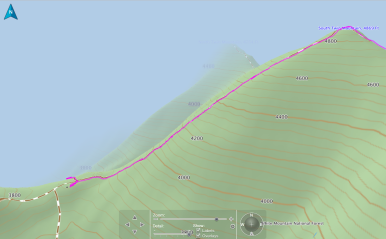
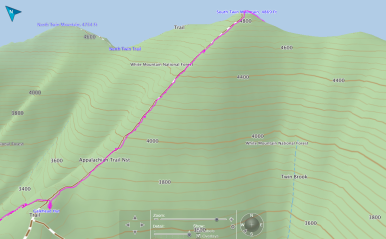
The climb is a workout. You will know you are getting to the summit when the terrain changes from big boulders to those pesky little loose rocks.
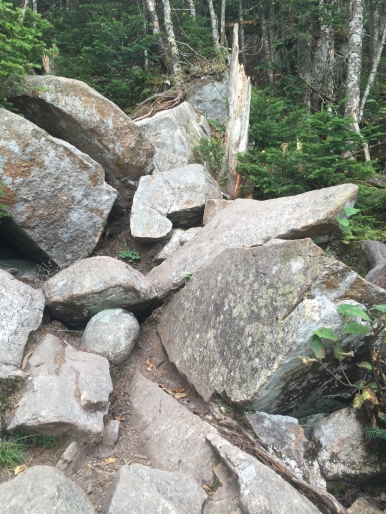
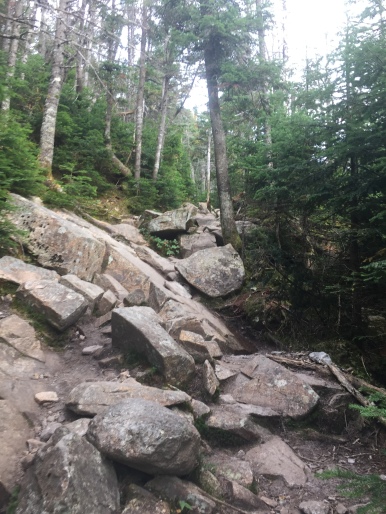
Here are some images looking back out during the climb.
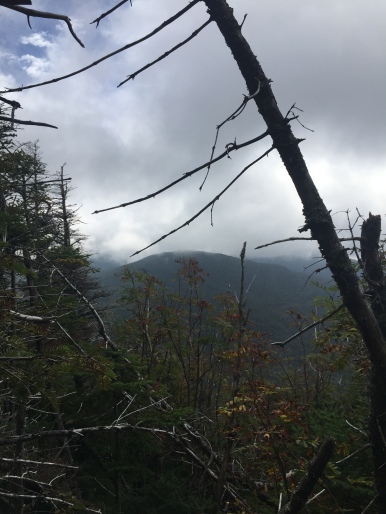

The views from the summit are absolutely amazing and very worth the climb.
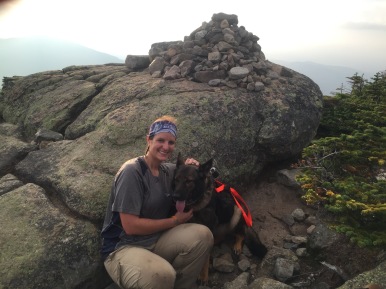
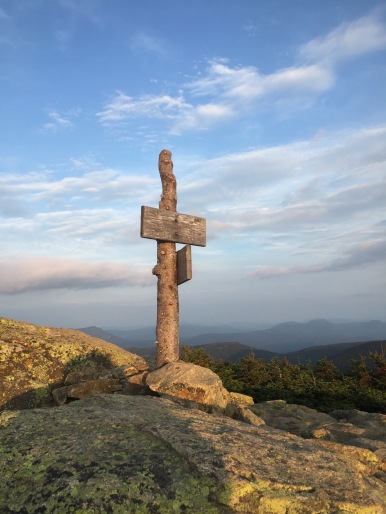
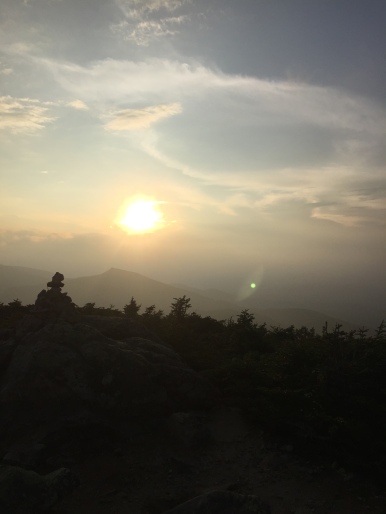
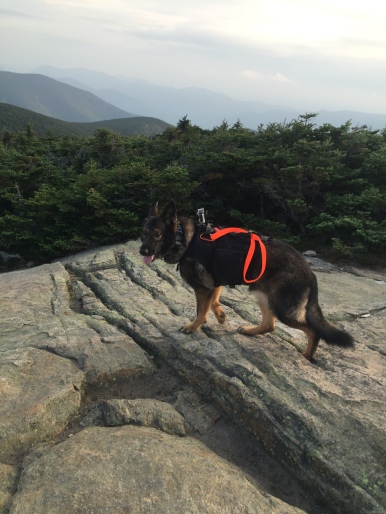
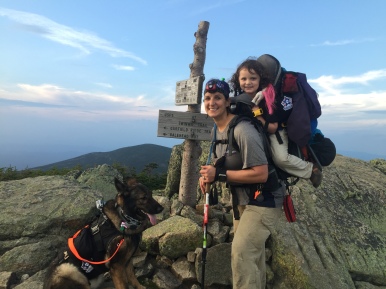
A few notes about South Twin, if you are traveling onto North Twin continue walking straight for roughly 1.2 miles, if you are traveling to Guyot, Bonds, Zealand you need to descend the mountain to the “south by southeast” or from the summit path you just climbed, it is to the right. The above image is the trail sign where you start to descend. It’s a nice gotcha if you are not paying attention.
Also, if you are heading up South Twin via Twinway Trail with a child carrier, make sure he/she is secured snugly in the carrier. It will help limit their movement helping you climb without large shifts of weight, especially those going backwards.
The descent from South Twin is quick, but a bit steep. Absolutely nothing like the climb up South Twin. You will descend back into the trees and have a nice flattish walk to Mount Guyot. This is a highly camped area, so if you are looking for a campsite there are various places. While you travel along the path, look for well-travelled paths heading off the main trail, most of them are to campsite, just make sure the one you chose to camp at is 200ft from the trail.
We broke out of the tree line roughly 2 miles passed the descent. This is the point of the commitment. We took a short break looking out over the area we were to camp and climb the next day. It was beautiful. During the break, we saw an awesome multiple lightning strikes in the distance and rain, we made the decision not to make the commitment and went to our back up plan for the remaining of the hike.
We headed back into the tree line to a nice level camp area, we marked as our back up campsite as we walked by it. We made camp, hung our food in case of bears and within 5 minutes of getting settled in the tent we had a nice lighting show and rain for remaining of the night. It was an amazing storm, but I am glad we were fully covered and did not need to retreat to another location. Also, we had no bear visitors that night.
Abby did extremely well throughout the day. It was not just a physical workout for her, but a mental test. She followed every command to wait, climb, jump, rest, go (okay to pass and lead), platz (down), plac (crawl), bot (here) and leave it. The below picture is the result of her hard work. She did not even wait for her blanket or removal of her leash before laying down for the night.
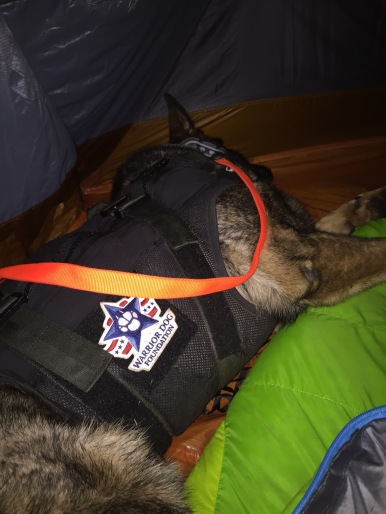
Abby activity for the day, 10 hours 26 minutes of movement. (resting hours includes not only sleep, but anytime Abby is not moving, laying down, sitting, standing still, etc)

By the morning, she was all ready to go. In fact, she became the morning supervisor of taking down camp. We felt like she was grading us on time and method.

The morning view of campsite two. Abby and I walked the area in the morning to stretch our legs and to allow Abby to enjoy all the smells the woods have to offer before getting ready to work. The Admiral chatted away to her pony. (The Admiral is 3 and half years old)

Since, we did not commit to Guyot Campsite, we would not be able to make West Bond, Bond and Bondcliff. The decision was made to keep our family together and safe. It did remove about 6 miles from our total. With that being said, we have planned to make the hike to the Guyot and to the Bonds in the near future to keep Abby’s word of making it there. The fall foliage will hopefully be amazing this time of year. So, check back soon for the post, images and videos.
We headed back to Mount Guyot in the morning. The view in the morning was even better with most of the clouds gone and the sun out. It was a good area to take a break. However, the wind was very active. We dealt with 30 mph winds with gusts up 37 mph. A very normal occurrence in the Whites.
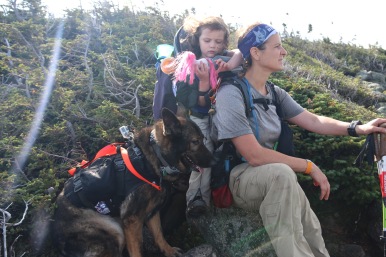

The path up to Mt Guyot or down to Guyot Campsite is open and a rock to rock pathway. Night travel, rain or high winds can make the path little tough to navigate. Though, its probably very nice place for some snowshoeing.
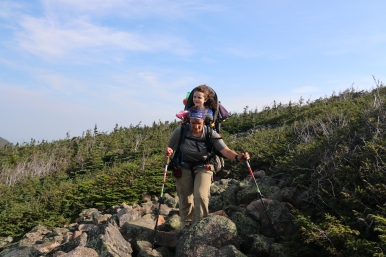
Follow the path until you get to the junction one path goes to Guyot Campsite, the path up heads to the summit of Mt. Guyot
Some images from the summit of Mount Guyot

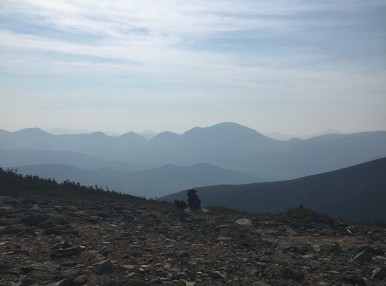

Continue on the path to descend Mt. Guyot and follow the Twinway Trail. It’s a nice trail with some huge boulders that you will need to climb over or work around. Twinway Trail will bring you to the summit of Mount Zealand.
Yes, you will descend Mount Guyot then climb up Mount Zealand only to descend Mount Zealand to get the Zealand Falls Hut. Though, it is ups and downs, but far from pointless. 😉

Just follow the path and signs along Twinway Trail
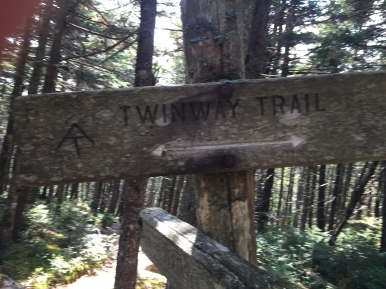
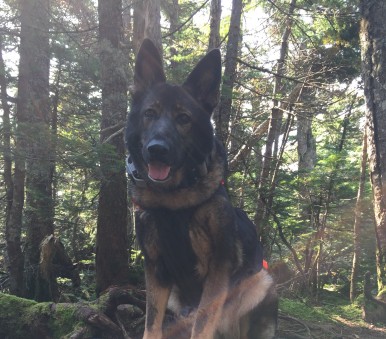
The summit to Zealand is a little tricky for about 25 feet, if that. The summit of Zealand is 0.1 miles off the Twinway Trail. There is no views at the summit, but along the cliff there are 360 views. At the summit, you will find numerous Gray Jays/Canadian Jays or Camp Robbers. The latter is a nickname well-earned.
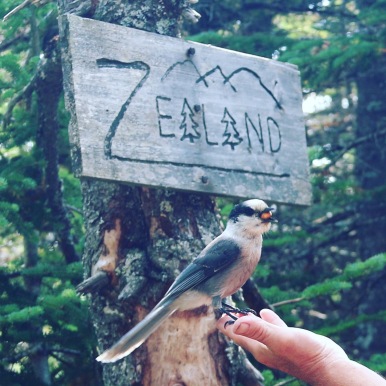
Abby was not assumed at all with the summit of Mount Zealand
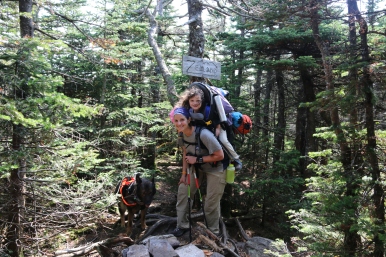
The descent of Mount Zealand is quick and easy. First, part is a steep rock facing descent, which is also a great location to take a break and enjoy a snack. Here is where all the views are located.
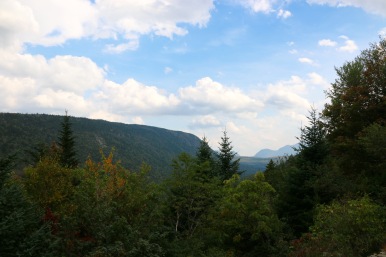
The second part of the descent is a ladder. Nothing like the ladder at Cannon Mountain via Hi-Cannon Trail. It’s just five steps and not so steep.

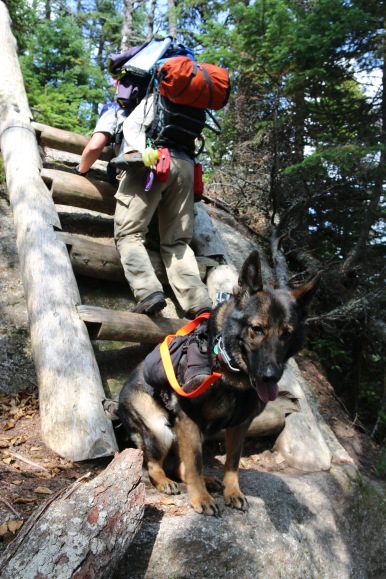
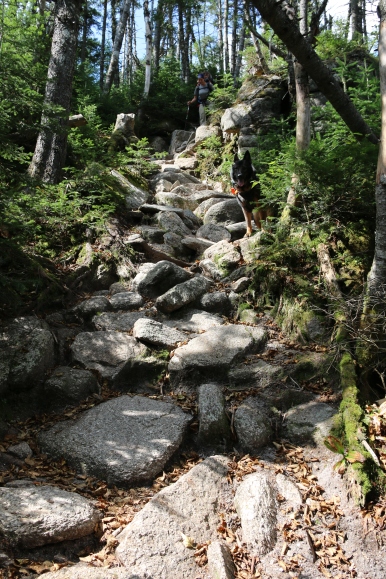
The rest of the trek to Zealand Falls Hut is rather uneventful. Most of the hike is downhill with some areas of rock facing climbs. You will pass over a few bog bridges. Though, Abby decided to entertain us with skipping the bog bridges and plow through the mud. At least, she wasn’t headed into the car or home for a few days. 🙂
After the descent of Zealand, you will remain dropping elevation until you reach the Zealand Falls Hut.
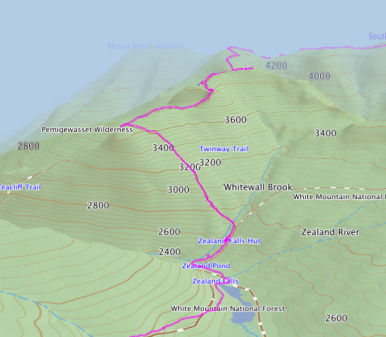
You will know when you are close to the hut when you start hearing the Zealand Falls. It’s a beautiful little area and during the summer months packed with people. There are a few pools water. Abby went to cool off. Though, I was glad she went to clean off the mud. It is also, a great location to give your feet a quick spa treatment. Though, I suggest first removing your boots and socks.
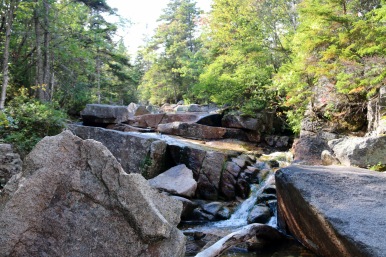

The Zealand Falls Hut is rather popular because of its easy hike to the Hut and has easy water access. We enjoyed some nice hot beef and barley soup and instant coffee while we relaxed a bit before heading on to our next campsite.
Of course, we got the weather report before we left. Again, the forecast was thunderstorms at night. The storms seemed to be following us and a theme song to the nights during this hike.
We climbed down a short descent, roughly 750 feet, from Zealand Falls Hut. There is a nice water spot for lunch, break or to avoid some of the hut traffic.
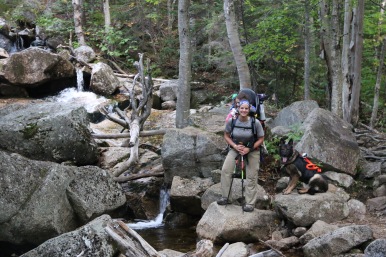
We continued to follow the Zealand Trail. The Zealand pond is very beautiful and a great location to maybe see a moose or two during the off-season of the hut.


Here is my view from the bridge and pond images above.
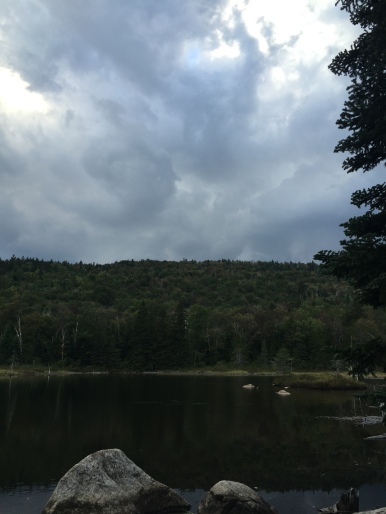
We hiked to the A-Z Trail junction and took the trail leading up to Mount Tom Spur. It is a 2.8 miles trek easy with a moderate areas.
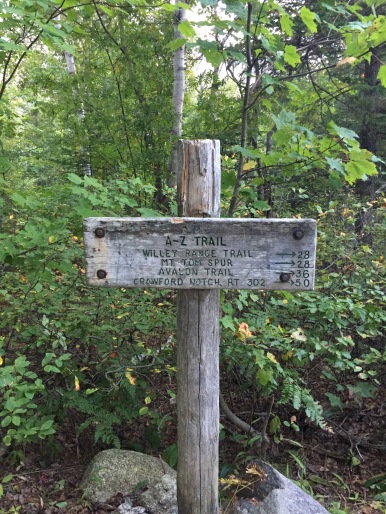
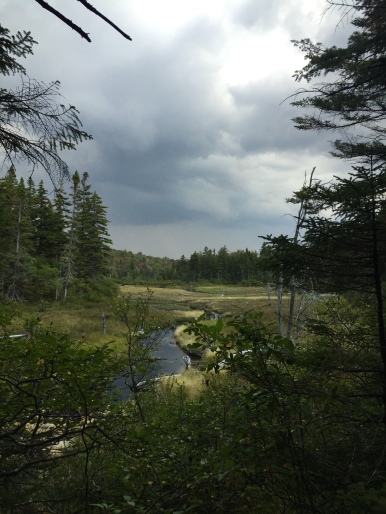
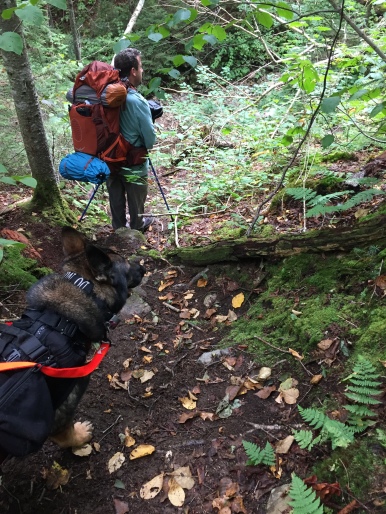
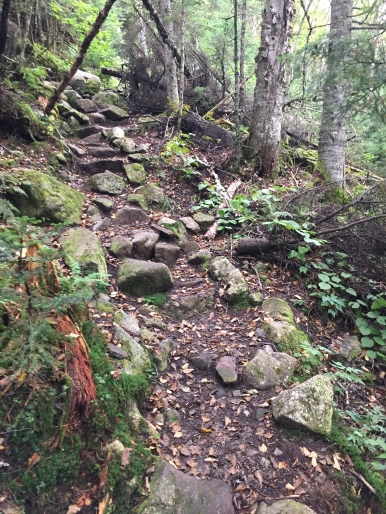
Our goal was to make it to the campsite location before the storm hit. Unfortunately, we made it about a mile before we felt the first few raindrops. We managed to get the Admiral covered, rain covers on the packs and electronics safely stored out of the rain before it started pouring.
When I say pouring, I mean it. It was the type of rain that causes puddles in a few minutes and when you are traveling up hill, there is a small river of water traveling down. Your quick dry pants are just soaked in minutes. That type of pouring rain, the deluge type.
The storm ended up cutting our day light short, which meant we were rocking headlamps up to Mount Tom Spur area.
The A-Z Trail is truly a hike in the woods. You will face different terrain in a heavily dense trees and bushes. Not many people travel the path even though it is a cut over to the Presidential Range. Most people travel via the Ethan Pond Trail. That being said, keep you eye out for yellow trail markers it easy to lose the trail if you are not paying attention and you will see numerous trees with bear markings. No worries, no attacks have occurred. It’s normal you are in their territory after all.
You will know you hit your ascent to Mount Tom Spur, because the path will just start to ascend with rocks. Its steep at a moderate rate. Passing through this area in the dark in the rain was a bit tricky. I remember a large amount of swearing coming from somewhere behind me, thankfully the Admiral was taking a nap. 😛
Abby enjoyed the rain as a way to cool off. She led the way last the 0.2 miles to the campsite. The red lights attached to Abby’s harness were extremely helpful this evening and night. We removed her packs and placed them into our packs to protect them from getting wet.
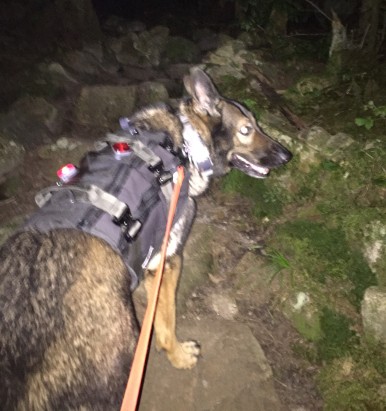
By the grace of the Mountain Gods, the rain stopped for roughly the last half mile to the campsite location and throughout camp set up. With all the bear markings, we hung our food and other items a little farther than usual. We got all settled in before the rain restarted and the thunder came.
In the morning, we pack up camp while our supervisor decided we could manage without the watchful eye.
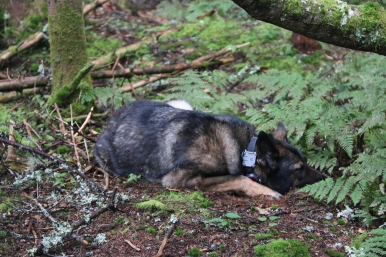
We followed the A-Z Trail to the Avalon Trail and out to Crawford’s Depot.
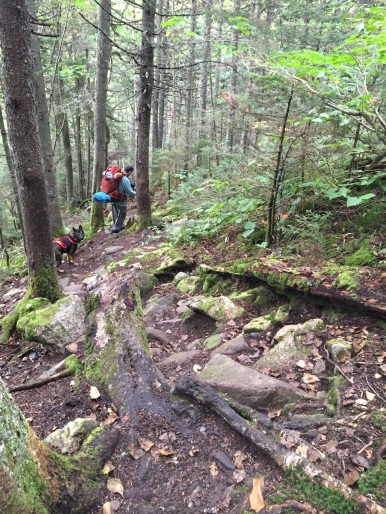
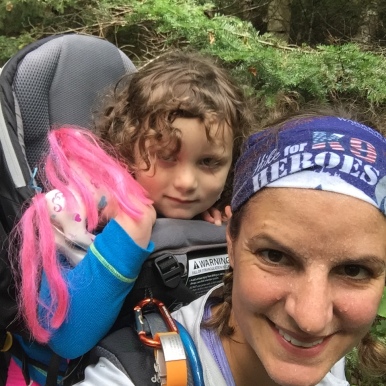
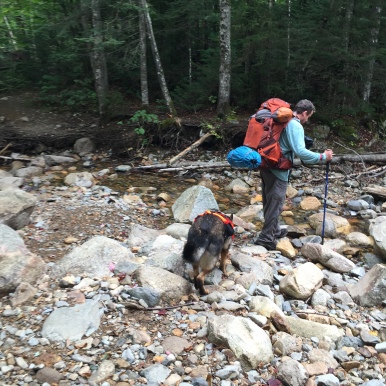
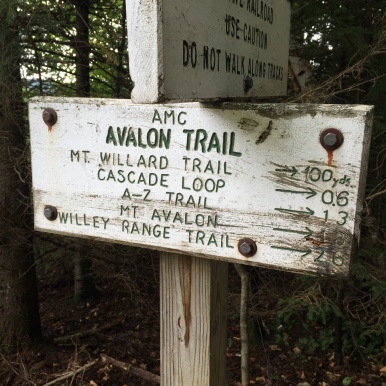
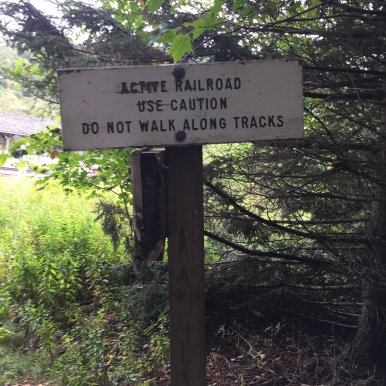


We could not have been more happy to see the Highland Center. For a few reasons, first and most important real bathrooms, cooked food, cold drinks and a chance to do a wash down. There is nothing like a good hand and face wash after a few days in the woods. Plus, our car was close by with a stash of goodies, clean clothes and a chance to unload items we no longer needed.
We lived a lavish life for a few hours before making our way to our final campsite in a light rain. Our final campsite was off the Jewell Trail. A trail we have travelled numerous times to the summit of Mount Washington. Our original plan was to camp at the Mizpah tentsite. The weather report of rain throughout the night and morning, we decided to travel on a trail that was covered for half the hike up to Mount Washington.
We did this for a few reasons. Once, we left the Mizpah tentsite we would have to travel about 7 miles above tree line in what was projected to be in the clouds and rain. Shelters nor huts allow dogs. Lake in the Clouds Hut would be available for water and some food, but no shelter, if needed. Basically, there was no areas for safety.
The morning of September 11th, we were in the clouds with light rain. The visibility was limited but manageable.
We made it to the summit in the latter morning, of course the summit was usual in the clouds.
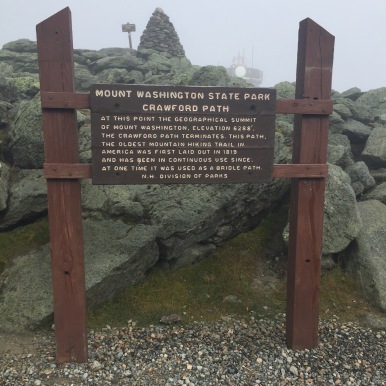

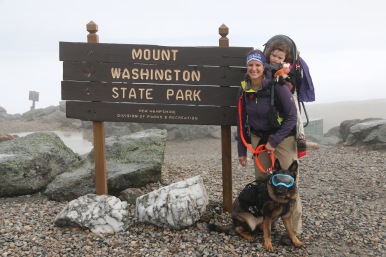
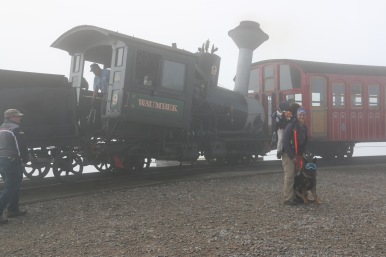
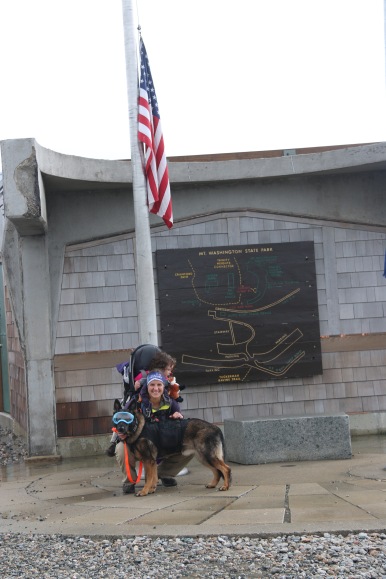

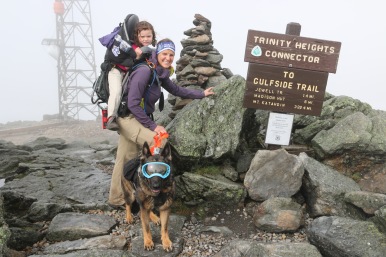

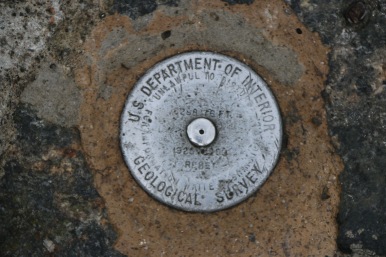
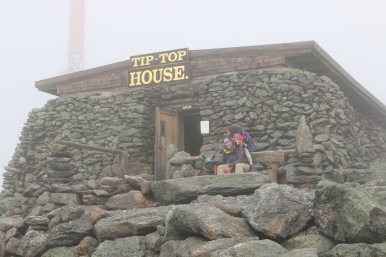
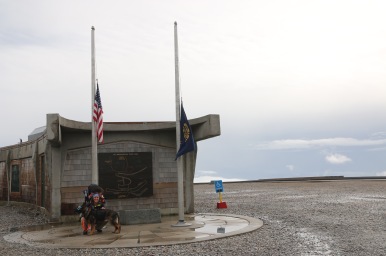
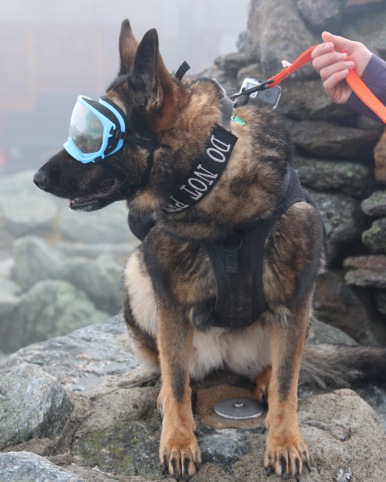
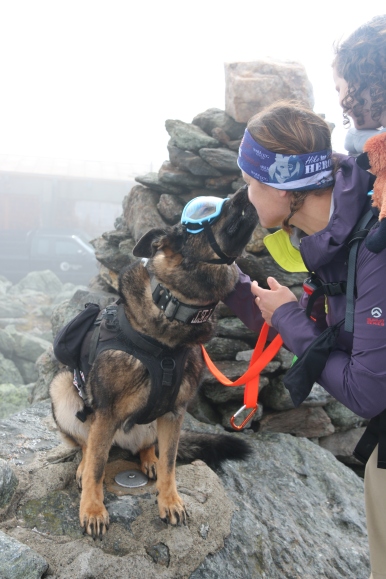
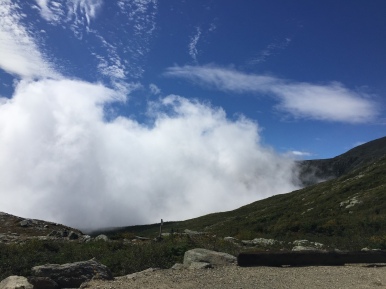

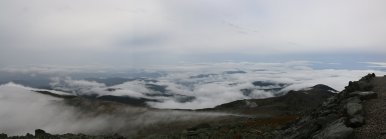

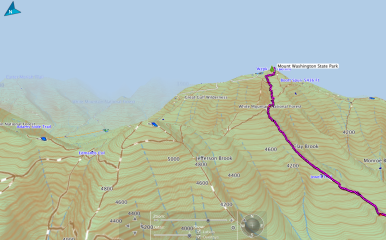
Overall, it was a great hike. We enjoyed our time on the trails and all the hikers we met along the way. We made tough calls to make sure we were all kept safe. Our original plans had to be modified, but it happens. We worked together as a team to get through some tough areas. We had numerous laughs along the way. And made memories that will be carried with us for a lifetime. We did it all while supporting a great organization, Warrior Dog Foundation.
It doesn’t get much better than that!
Please, visit our store to purchase the Hike for K9 Heroes Hoo-Rag Bandana. 100% of the proceeds to directly to the Warrior Dog Foundation. To learn more about the Warrior Dog Foundation, visit their site, here.

